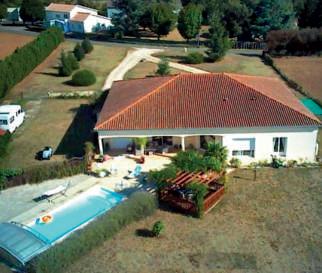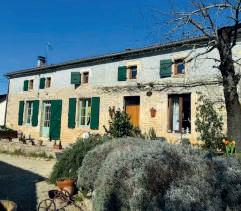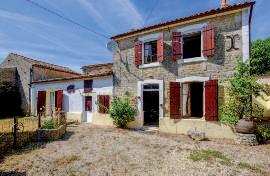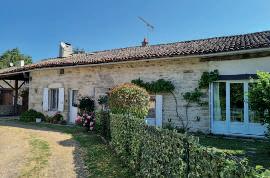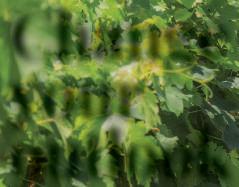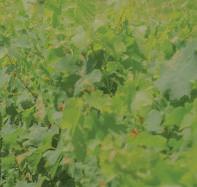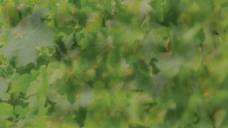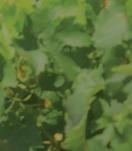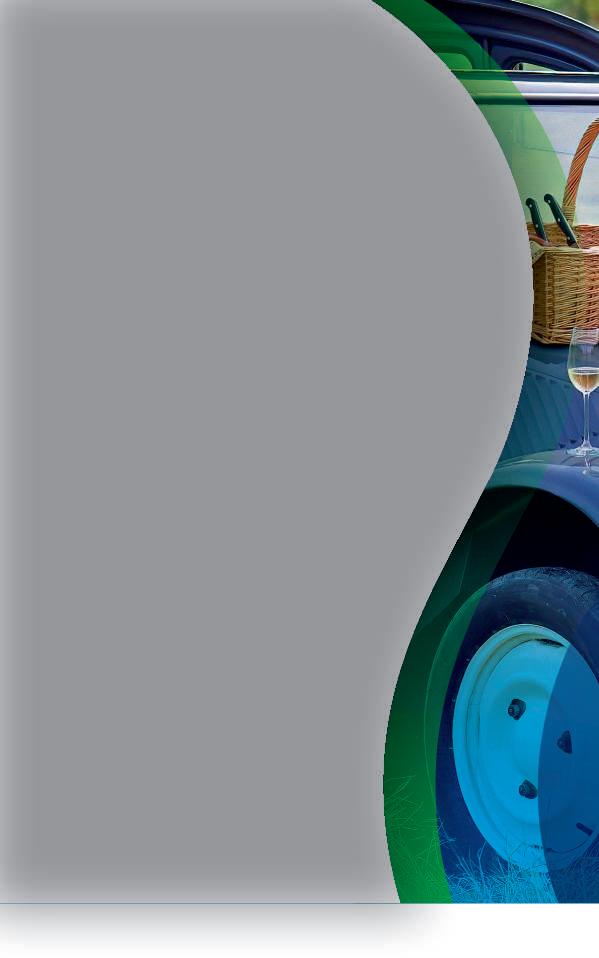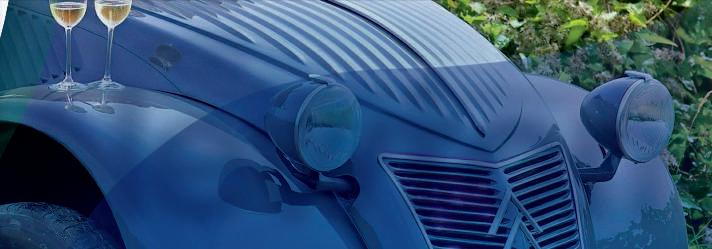































































































CONTACT US:
Tel: 05 17 36 15 32
email: editors.etcetera@gmail.com website: www.etceteraonline.org
17 rue des Chaumettes
86290 St Léomer
etcetera magazine @etceterafrance
Welcome to the April edition of etcetera magazine.
All of us will be hoping for more warm spring weather this month (and not continuous April showers, our garden has resembled a quagmire for too long already…) and now the evenings are lighter we can all start to enjoy more time outdoors.
Lots of great articles in this month’s magazine, a huge thank you to our wonderful team of writers.
Wishing you all a fantastic month ahead.
15 SAMU (Medical)
17 Gendarmes (Police)
18 Pompiers (Fire and also trained in medical emergency)
114 Text-message emergency number for deaf/hard of hearing
119 Child abuse
115 Homeless
113 Drugs and alcohol
112 European emergency not always English
1616 Emergency- Sea & Lake
55€

Commercial adverts: Please see our Media Pack at www.etceteraonline.org
What’s On/Listings: 12€ per 50 words for a guaranteed spot or free (space permitting)
Classified listing: 6€ per 25 words plus 3€ per photo
Property listing: 10€ per 50 words plus 6€ per photo
Code APE 5814Z Edition de Revues et Periodique Siret 80903463000016. La Présidente G. Feasey Registered. Le Bourg, 87360 Verneuil Moustiers. Impression: Rotimpres. Pol. Ind Casa Nova. Carrer Pla de l’Estany s/n. 17181 Aiguaviva (Girona) Espagne. etcetera est gratuit.
While we always do our best to ensure the content in this magazine is given in good faith and businesses are reputable, we accept no liability for any errors or omissions and do not endorse any companies, products or services. Articles written are the personal opinions of the original authors and do not necessarily reflect the views of etcetera magazine.

3131 Last incoming call, key ‘5’ to connect Orange English speaking helpline
0033 (0)9 69 36 39 00
Website in English: www.orange.com/en/home Technical assistance for landlines (French): 3900 (+33 9 69 39 39 00 from abroad)
SFR 1023 or 00336 1000 1023 (Not English)
EDF 8am to 8pm, Monday to Saturday.
+33 (0)9 69 36 63 83 EDF Helpline in English 0033 562164908 (From UK)
E-mail: simpleenergywithedf@edf.fr
CPAM - 09 74 75 36 46
Veolia Water Emergency No: 24h/24 et 7j/7
05 61 80 09 02 (press 1 for urgent problems or 2 for a technician)
S.E.P Du Confolens (Water)
05 87 23 10 08 Emergency 24/7
Aéroport Int’l Limoges 05 55 43 30 30
SNCF (train times, buying tickets etc) 36 35 Credit Agricole English Speaking Helpline Charente (residents only) 05 45 20 49 60
Alcoholics Anonymous
For contact details of meetings in your area including those conducted in English, visit www.aafrance.net
SSAFA France 05 53 24 92 38 email france@ssafa.org.uk
Please download the pdf from this link now: www.paysruffecois.fr/sante/guide.pdf
HOSPITALS
05 55 05 55 55 Limoges (CHU)
05 55 43 50 00 St Junien
05 55 47 20 20 Bellac
05 49 44 44 44 Poitiers
05 45 24 40 40 Angoulême
05 49 32 79 79 Niort
05 45 84 40 00 Confolens
Bereavement Support Network English speaking support group for guidance on coping with bereavement in France. Personal and practical advice. www.bsnvar.org
Women for Women in France offering support to foreign-born (non-French speaking) women dealing with domestic abuse www.womenforwomenfrance.org
Counselling In France Counsellors, psychotherapists, NLP, CBT etc offering therapy in English to expatriates all over France on www.counsellinginfrance.com
French Health Insurance Advice line
CPAM English speaking Advice line: 09 74 75 36 46 (from France)
0033 974 75 36 46 (from other countries). The line is open from Monday to Friday, from 8:30 a.m. to 5:30 p.m.
NHS website : www.nhs.uk/using-thenhs/healthcare-abroad
www.ameli.fr
No Panic France Helpline: No Panic UK helpline: 0044 1 952 590 545 11h - 23h (French time) 7/7 www.nopanic.org.uk /nopanicfrance@orange.fr
English-speaking Crisis Line
SOS- HELP 01 46 21 46 46 3pm-11pm 7/7
British Consulate in Paris 01 44 51 31 00
British Consulate in Bordeaux 05 57 22 21 10 www.ukinfrance.fco.gov.uk/en/

























ATELIER MELUSINE & FORGE iN FRANCE
Have the pleasure of inviting you to celebrate
May Day
01/05/2024 - 14H-20h
Exhibitions
Wildlife lecture Stalls and games
May Pole Dancing
Artisanal food and drink
Forgezvous
Archery demonstration
Fun for all the family
Free entry & parking
Forge in France, 86290 journet
www.forgeinfrance.com
www.atelierdemelusine.com/may-day-2024


Venue : Forge In France, 86290 Journet. France ‘24




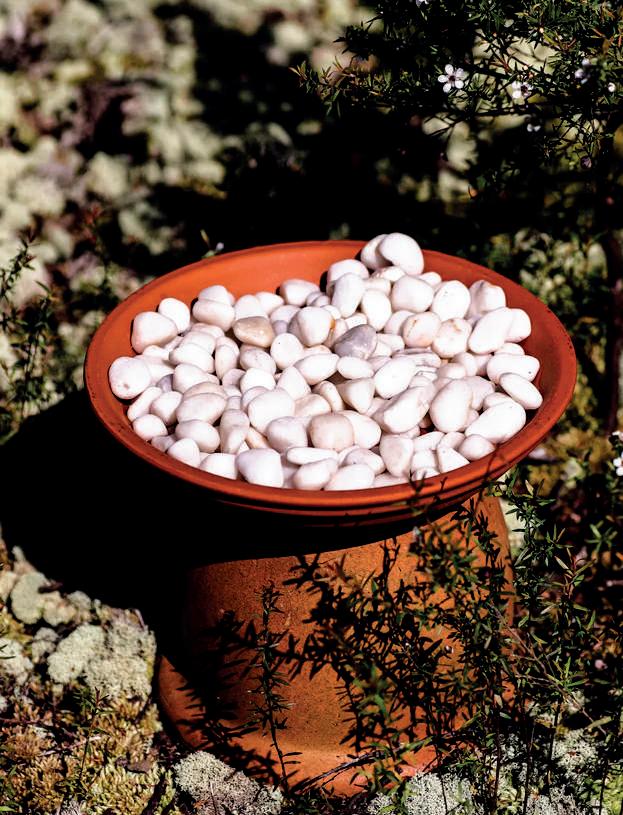
CREATE YOUR OWN DIY BEE BATH FOR BEES TO REST AND REHYDRATE USING JUST TWO MATERIALS
With spring upon us, our favourite pollinator friends arrive in our gardens and providing a water source is a huge
Materials
▪ A bird bath or any shallow dish (ideally one that’s not too deep but deep enough where pebbles can be added without spilling out.)
▪ If using a dish, something to raise the it off the ground, an upside terracotta flower pot works well.
▪ Pebbles, marbles, rocks etc,
▪ Water
Steps
1. Decide where to position your bee hydration station and set your bird bath or dish in place.
help to them. Like us, bees get thirsty and need a source of water to stay safe and healthy!
2. Fill it with pebbles so that the bottom is covered. If you don’t want pebbles, you can add marbles or any other nontoxic, waterproof material that a bee can perch on and reach water from.
3. Next, add water to the bird feeder. Don’t add too much, fill with water until the bottom of the pebbles are just submerged. You need to make sure there is large enough dry areas for bees to easily land but you also want to make sure the water is high enough where the bees can reach it.
Plant flowers nearby and enjoy the bees visiting your garden for nectar and water!
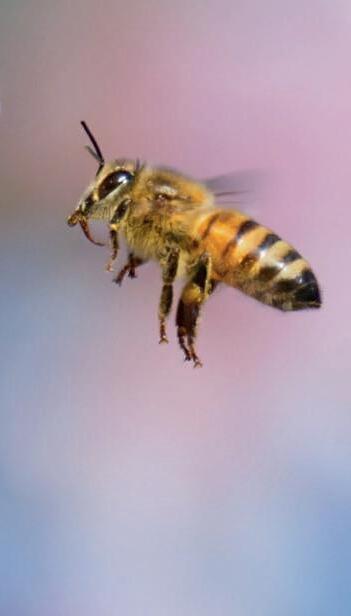


Christie’s EI

Together

GORGEOUS GIFTS GALORE * APRILPROMO*
SelectedScarvesonly6€! BEAUTIFUL CARDS

DELICIOUS HOME-MADE CAKES
Scones,Cupcakes,Brownies, RichFruitCake...
www.chezchristies.fr
05.49.50.61.94
GENCAY(86) behind Mairie closedSundays&Mondays



Come
techniques and create your own ceramic treasures at my
3
Contact
Encadrement d’Art
1 Rue du 19 Mars 1962 87150 Oradour sur Vayres
Picture framers to La Galerie de Gabriel
Custom Framing for Arts, Crafts & Memorabilia
John








IN MARCH WE SAW HOW TIME MEASUREMENT BEGAN AND HOW RADICALLY IT HAS CHANGED. NOW LET US LOOK AT A CALMER PERIOD, AND WHAT THE DRAWBACKS WERE
The sundial has always been with us. It seems to have become commonplace about 5000 years ago, and the way it sits there, on its brick plinth, or hanging on the church wall, speaks of peace and reliability. As long as there is a gleam of sun, you will always know the exact time. That’s what it tells us.
Sadly, that is not true. For a start, the sundial must be set up accurately. Take a standard, horizontal sundial. Thse can be manufactured anywhere from China to South America, sold from a garden-centre, and plonked on a brick pillar. To work correctly, the sundial should be set up on a meridian-line (not always possible, but a correction must be built in if it is not). The line joining noon and the centre of the dial must be orientated precisely towards the nearer pole (depending upon hemisphere). The gnomon (the triangular bit that throws the shadow) must be set so
that the style (the flat edge that forms the working-edge of the shadow) is exactly parallel with the Earth’s rotational axis at that point. So really, each sundial should be built, calculated, and engraved for the exact site it is designed for.
But even if all this were scrupulously attended to, the sundial would only ever be exactly accurate (assuming the sun was shining) on about four days each year!

sun each day at a given time of day. Solar noon is often used, but it can be any time as long as it stays constant.
Now this is not some mythical time-bending creature that flies about for the sole purpose of disrupting sundials
The Great Analemma in the Sky
The reason for this is the Great Analemma in the Sky. Now this is not some mythical time-bending creature that flies about for the sole purpose of disrupting sundials. In fact, you cannot see the Analemma because it never exists as an entire entity. It is simply the track of the position of the
Over the last 40 years people have tried, more or less successfully (rather the latter), to capture photographs of the Analemma. It is fiendishly difficult (you can find a few on the internet). People have known it existed for a long time –in fact, it may well have been the inaccurate behaviours of sundials that alerted them to it. People with lots of time on their hands managed to image the Analemma by means of camera obscura systems, projecting an image of the sun into a large, dark room and marking the position of the image at the same time every day. It can also be calculated and plotted using the Equation of Time.
 ByMikeGeorge
ByMikeGeorge

Mike George is our regular contributor on wildlife and the countryside in France. He is a geologist and naturalist, living in the Jurassic area of the Charente
In fact, the Sun, rather than climbing from its position between the Equinoxes up a vertical line at noon, as most of us think it does, really wanders around a gentle figure-of-eight. Gentle, but still extending over about 8 degrees of latitude, which equates to half an hour. Thus noon actually changes by 15 minutes each way during the year. Twice!
So, in fact, your sundial is correct on 14th April, 10th June 10,1st September, and Christmas Day, which are the days when the sun actually lies vertically above the Greenwich Meridian.
So What on Earth (or in Heaven) Is Going on?
The reason is that the Earth, which really does go round the Sun, doesn’t have a nice, flat orbit; it is dished a bit. Also, it doesn’t point its axis of rotation lovingly at the Sun – it’s quite some way off. This combines to

This is an analemma curve designed to indicate the error on a sundial. Eadam in Latin means "at the same time", thus indicating that the indicated time should be adjusted according to the curve

give this erratic (but, yearly, strictly repeated) wander. Each planet, now that detailed exploration has mapped orbits and noted eccentricities, has its own analemma. Many are variants of Earth’s, but Mars’s, for example, describes a tear-drop!
I mentioned Greenwich Meridian back a bit there. What effect did this erratic Solar habit have on Astronomy?
Well, this all came along when men were starting to realise the importance of timecertainty, especially in navigation. As we mentioned in March, one needed to know the exact time difference between when a phenomenon was observed at sea, and when it would be seen at a designated land-based referencepoint. After much trouble and expense –and prevarication – the chronometer had solved the problem of time at sea, but that would be useless if the time of noon at the base-location was wandering around by up to 15 minutes! There must be some way to fix noon daily.
Greenwich Steps in
If you look at Greenwich observatory you will see that there are two dome-roofed towers facing the Thames
It was decided to use Greenwich Observatory to solve the problem. Charles II had given it to the nation as the major observatory, to act as a base for surveying purposes, and for the recording of time and propagation of this to the Navy and anyone else who needed to know it. Clearly, this was becoming a serious matter. For surveying purposes, it was agreed that the zero meridian for mapping should pass through Greenwich Observatory and should be designated as the zero meridian as widely as possible. This did not go down well with other nations, particularly the French, who were in full Empire mode and felt that the zero meridian should pass through Paris. In fact, it was not finally agreed internationally until 1884!
As for time, it was decided that Greenwich would remain the arbiter of time, and that noon each day would be the moment at which the sun passes vertically above the Greenwich Meridian. They were already set up to measure that on a daily basis, so
that is what they would do. As long as everybody was singing from the same hymn sheet (and they would be!) it would work. That would be Greenwich Time, and would be set daily on Greenwich’s very superior public clock.
It would also be signalled to the Navy every day. If you look at Greenwich observatory you will see that there are two dome-roofed towers facing the Thames. On the apex of one is what looks like a standard Christian cross with a red sphere just below the crossbeam. This is in fact a time signaller. The stretch of the Thames from which it is visible at that time was a major anchorage for the Royal Navy, and the crews of hundreds of ships could see that sphere.
It seemed that 1pm was a good time to tell the Navy what time it was. At noon, the Solar observations were made, the clock was adjusted, and an accurate hourglass (or more likely, several) was set to run. When they indicated the approach of one o’clock, the red ball was raised to its high position and, as the glass ran out, was released to fall down its mast. This was observed by hundreds of matelots and officers, who set their dials and systems at that moment. This dropping ceremony is


still performed to this day (though probably with some changes).
But what about non-naval timekeepers? How did they find out the time? No radio was broadcasting the pips, no falling balls were visible from London.
Enter the time sellers. This was the era when watchmakers were perfecting the pocket watch. These tended to be largish “Turnip-watches” with flip-open covers hiding the face. These were becoming surprisingly accurate, in some cases to a few seconds in a day. An enterprising person could provide themselves with an accurate watch, have it certified as accurate, and go to Greenwich each noon. Here he could set his watch to the newlyannounced stroke of Greenwich Noon, receive confirmation that he had done so, then spend the afternoon visiting his customers to “sell” them a glimpse of the RIGHT TIME! It sounds ridiculous, but it happened.
Well, as we saw, Solar Noon was doing this gentle dance through about a half-hour period during the year. Greenwich had bopped this on the head by setting noon to the solar transit, but it was a slightly erratic time as far as nature and the Solar System went. It was an average time, taken over the year, so to reinforce this truth they eventually settled on “Greenwich Mean [or average] Time”. And we used it right up until 1972, when Coordinated Universal Time (UTC), which is maintained by atomic clocks, replaced it.

Calculated graph of the sun's positions at Greenwich throughout the year. This is similar to the actual analemma, but much exaggerated laterally for convenience
Voici une liste de mots et expressions essentiels, utile si vous êtes en vacances en France ou si vous êtes débutant en français ou même pour vous qui avez peut-être besoin de rafraîchir vos connaissances en français. À utiliser sans modération car cela marque la politesse !
Here is a list of essential words and expressions, useful if you are on holiday in France or if you are a beginner in French or even for those who need to refresh their skills in French. To use widely as it is a marker of politeness! Get the

Saluer
To Greet
Bonjour !
Bonsoir ! (in the evening)
Salut ! (informal)
Coucou ! (between children or very close friends)
Prendre Congé
When Leaving
Au revoir !
Salut ! (informal)
Bonsoir ! (in the evening)
Ciao ! (between friends)
Bye ! (between friends)
À tout à l’heure !
À plus tard !
À bientôt !
À demain !
À lundi ! À mardi ! …
À lundi prochain !
À la semaine prochaine !
À la prochaine !
À la prochaine fois !

Pouvez-vous épeler votre nom SVP ? (s’il vous plaît)
Peux-tu épeler ton nom STP ? (s’il te plaît)
Comment s’écrit votre nom SVP ?
Comment s’écrit ton nom STP ?
Comment on écrit votre nom ?
Comment on écrit ton nom ?
Épeler Son Nomto Spell One’s Name
(Bien entendu, utilisez l’alphabet français)
(Use the French alphabet of course )
Mon nom s’écrit D.A.V.I.D Mon nom s'épelle D.A.V.I.D.
Prendre Des NouvellesHow Are You ?
Souhaits
Wishes (Have a Good…)
Bonne après-midi !
Bonne journée !
Bonne fin de journée !
Bonne semaine !
Bonne nuit !
Bon weekend !
Bon voyage !
To Ask the Name of Someone
Comment vous appelez – vous ?
Comment t’appelles – tu ?
Quel est votre nom ?
Quel est ton nom ?
Demander D’épeler Son Nom
To Ask to Spell One’s Name
Comment ça va ?
Comment allez-vous ?
Comment vas-tu ?
Ça va ?
Ça va bien ?
Et toi ?
Et vous ?
Je vais bien
I am fine ça va – (ça va) bien (ça va) très bien pas trop mal comme ci, comme ça.
Je vais bien.
Je ne vais pas bien. Ça ne va pas.
Remercier To Thank
Je vous remercie (beaucoup).
Je te remercie.
Merci (beaucoup). Merci bien. Merci mille fois. Merci infiniment.

Je vous remercie du fond du cœur.
Merci pour tout.
Je vous en suis très reconnaissant.
Répondre à un remerciement
To reply to a thank you
Je vous en prie.
Je t’en prie.
De rien.
C’est normal.
Mais, ce n’est rien.
C’est le moins que je puisse faire.
Pas de problème.
À tout moment.
Tout le plaisir est pour moi.
Il n’y a pas de quoi.
Pas de quoi.
S’excuser -
To excuse oneself
Je vous prie de m’excuser
Excusez-moi !
Excuse-moi !
Je suis désolé (e).
Désolé (e).
Pardon.
Je regrette.
Pardonnez-moi ! Pardonne-moi !
Je vous demande pardon.
Demander un objetWanting something
Je voudrais …., SVP.
Je vais prendre …….., SVP.
Un kilo de tomates, SVP.
S’il vous plaît, j’aimerais….. S’il te plaît, puis-je avoir………. ?
Est-ce que je pourrais avoir….. ? Avez-vous…….. ?
Demander un renseignement
Asking for information
Pouvez-vous m’aider ?
Pouvez-vous me dire….?
Excusez-moi, où se trouve le restaurant ? (singular) / Où se trouvent les toilettes ? (plural) Vous pouvez me dire…. ?
Want to know more about France and the French language? Contact me!
À bientôt ! Isabelle
Élargissez vos horizons avec CONTINENTAL HORIZONS ! Broaden your horizons with CONTINENTAL HORIZONS!
Isabelle works for CONTINENTAL HORIZONS Language Centre in L’Isle Jourdain 86. She is a specialist Teacher of French as a Foreign Language with more than 26 years’ experience.
Do not hesitate to contact her on 06 20 10 34 49 or 05 49 84 17 73
Learn French with Continental Horizons! Contact us by email : continentalhorizons@free.fr





Excusez- moi, où
Excusez-moi, puis-je vous poser une question ?
Pouvez-vous m’expliquer ?
Je voudrais savoir………..
How do we say… in French?
Comment on dit…….. en français ?
Quel est le mot en français ?
Comment ça s’appelle en français ?
Comment dit-on « x » en français ?
Comment on appelle « x » en français ?
Je ne connais pas le mot en français.
Qu’est-ce que c’est ?
Quel est cet objet ?










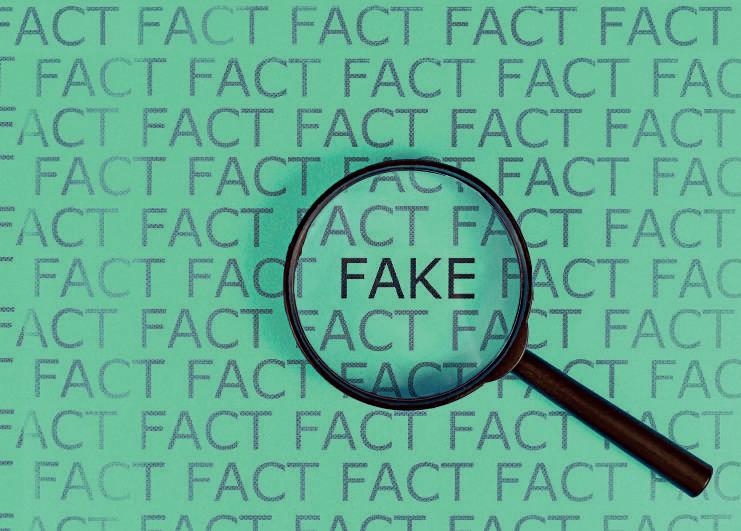
Around 1990 a scientific journal in the USA published details of a chemical compound called dihydrogen monoxide (or DHMO). The authors detailed how the substance is implicated in the deaths of thousands of Americans every year, mainly due to accidental ingestion. Not only is DHMO a major component in acid rain, noted the article, but it accelerates the rusting of many metals and in its gaseous form can cause severe burns. It has also been found in tumours removed from cancer patients. The report added to the alarm by highlighting how DHMO is widely used across industry and agriculture, its presence being confirmed in every stream, river, and lake in North America. In a subsequent poll, 86% of respondents read the findings and agreed that DHMO should be banned, a result which has been replicated numerous times with different groups.
The punchline here is that dihydrogen monoxide is the chemical name for water. Since this month of April gives licence to practical jokes and trickery, I’ll clarify that the above tale is quite genuine, the report’s authors were not aiming to trick an audience unfamiliar with chemistry. Their intention was simply to demonstrate that our opinions can be shaped simply by how something is presented to us or even by who is doing the telling. We are even more easily persuaded if that person has an easy-to-remember name.
Research by the Australian psychologist Eryn Newman showed how a group of
Brian White lives in south Indre with his wife, too many moles and not enough guitars

world’s second oldest profession - it’s often less honourable than the first - for many of its practitioners, dissembling without consequence is practically a pastime.
volunteers believed the (false) statement “Turtles are deaf” more when the claim was made by “Andrian Babeshko” than when it was attributed to “Czeslaw Ratynska”. Similarly, we’re more likely to accept something as fact if it is written in stark colours like black on white rather than, say, yellow on white. If an article includes a photo we’ll trust its claims over one which doesn’t, (witness our shelf full of recipe books). It’s cognitive laziness, we absorb what requires least effort. We’re all pretty gullible, is what I’m saying.
Modern life means navigating an obstacle course of misdirections and falsehoods
Modern life means navigating an obstacle course of misdirections and falsehoods. From the bare-faced whoppers like “Britain will thrive by leaving the European Union”, through the welter of dubiously-sourced and selectively-used statistics, to food packaging cheerfully labelled “Ouverture Facile”. (I recommend seeking out “Blizzard of Lies”, a typically witty song by jazz pianist Dave Frishberg). We not only get conned but are often persuaded that it’s for our own benefit. Years ago, for example, I arrived at my local building society to be met by a notice, “To provide excellent customer service this branch is closed for staff training”. Hmmm….
Advertisers excel at reassuring statements just on the legal side of false but they can’t match the political arena. Said to be the
But even in the more rarefied world of art the tricksters proliferate. Expert authenticators and fancy-pants auction houses labour nervously in the shadow of master forgers. Counterfeit paintings are undoubtedly hanging in collections and galleries around the world exhibited alongside fake sculptures. Twenty years ago the custodian of the Guangzhou Academy of Fine Arts in China was caught having stolen more than 100 paintings and replacing them with copies he had made himself. Incredibly, he later discovered that someone had replaced his forgeries with copies of their own. In the UK counterfeiters like John Myatt and Tom Keating sold hundreds of forged paintings, often driven by contempt for dealers who they saw as exploiting artists who had died in poverty. Keating’s fakesalso, weirdly, copies of them - have since been sold at auction. Make sense of that. So footballers writhe on the ground like they’ve been taken out by a sniper, cheating to gain unfair advantage, fashion magazines normalise unattainable body shapes by digitally altering photos, and pop stars perform to giant crowds with their caterwauling vocals corrected by Auto-Tune.
Sometimes they simply mime.
Everywhere it’s a barrage of tricksters and fraudsters, all with their own (not always hidden) agenda. Everyone lies. Trust me, I know. I’m a doctor.
Fortunately, long ago I developed the ability to filter out all the fake news and misinformation. I can modestly claim to have achieved an untroubled immunity from these charlatans. It hasn’t been easy, it takes rational examination, clear objectivity, and forensic analysis. But the reward has been to follow my own path through life, impervious and unswayed. I glide along, able to take the time, as I have noted here before, to smell the roses and taste the coffee, (which these days, incidentally, I make without that nasty DHMO stuff. I read an article about it, there was a photo and everything).

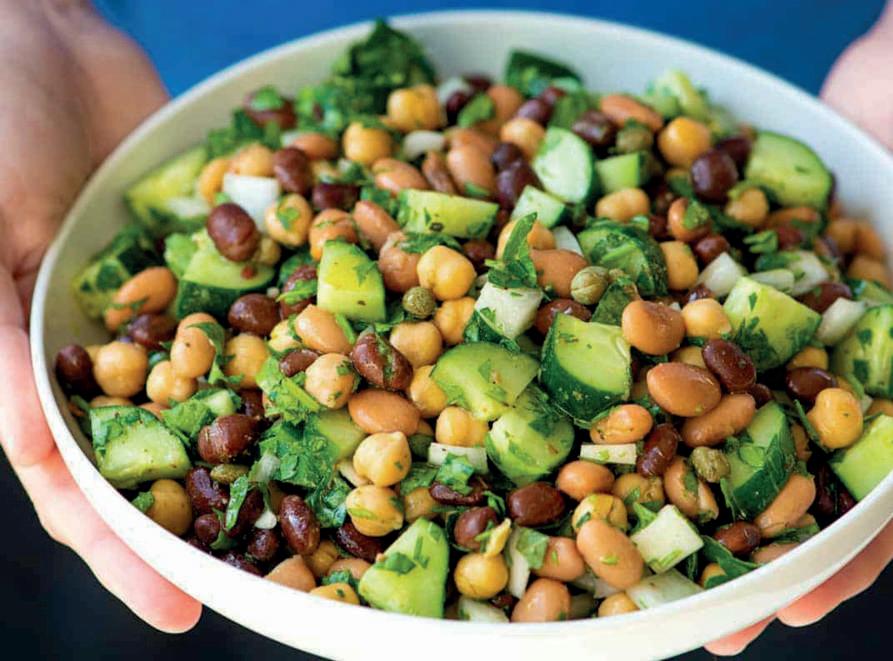
THIS MONTH I’M SHARING ANOTHER SMALL SELECTION OF SIMPLE, EASY TO MAKE RECIPES THAT WE ENJOY AS A FAMILY (TWO MEAT EATERS, TWO VEGETARIANS). NEXT MONTH, I’M EXCITED TO INTRODUCE OUR NEW FOOD WRITER!
I love this simple black bean recipe, another favourite from the Cookie and Kate ‘Love Real Food’ recipe book. It’s fresh, nutritious and you can prepare it in advance and let the flavours marinate. Great served as a main or side salad.
Ingredients (Serves 4 main, or 8 side)
3 cans of black beans (3 x 425g cans) cooked black beans, rinsed and well-drained
1 small tin of sweetcorn (drained)
1 orange, yellow or red bell pepper, chopped
Approx 12 quartered cherry tomatoes
One small red onion, chopped
A big handful of chopped fresh coriander 1 medium jalapeño, finely chopped (keep the seeds for heat if you’d like, or remove them for mild flavour) or 2 tablespoons finely chopped pickled jalapeño
½ teaspoon lime zest (from 1 lime, preferably organic)
2 tablespoons lime juice (about 1 lime), to taste
¼ cup extra-virgin olive oil
¼ cup white wine or apple cider vinegar)
½ teaspoon chili powder
½ teaspoon ground cumin
½ teaspoon salt, to taste
Optional garnishes: sliced avocado, crumbled feta, lime wedges
Method
1. In a large serving bowl, combine all of the ingredients and toss to combine. Taste, and adjust as necessary until the flavours really pop—I usually add another teaspoon or two of vinegar (you can use lime juice instead, for
 ByGayleFeasey
ByGayleFeasey
more mild flavour) and another ¼ teaspoon salt.
2. Cover and chill to enhance the flavours—preferably for at least 2 hours, or overnight. Serve in individual bowls as is, or with any of the garnishes listed. Leftovers keep well for up to 4 days or so; you might want to wake up the flavours with an extra squeeze of lime juice or tiny splash of vinegar.
Leftover suggestions:
▪ Serve it on fresh greens, perhaps with an extra spritz of lime juice for dressing.
▪ Feta, avocado and/or crumbled tortilla chips would be great on top.
▪ Pile it onto cheese nachos.
▪ Use it as a filling for burritos or quesadillas (just leave as much of the liquid behind in the bowl as possible).

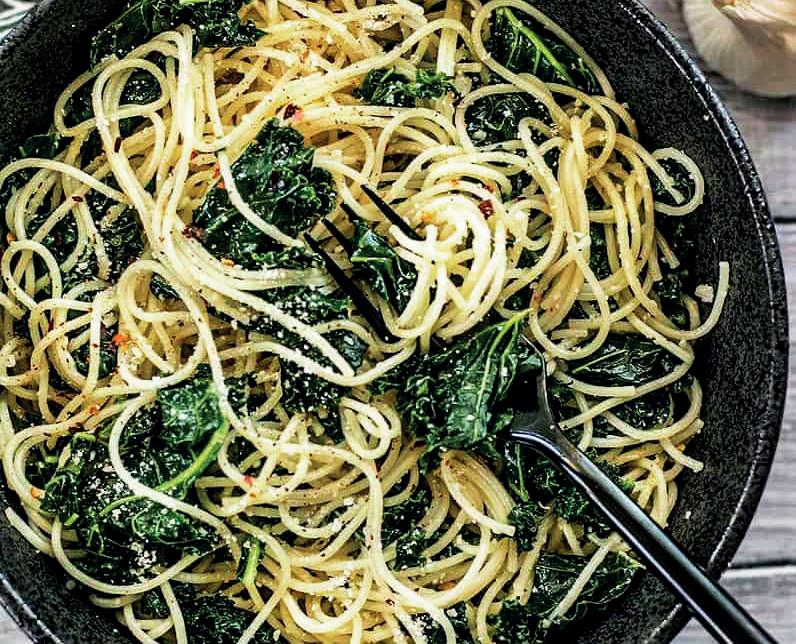
I found this recipe on Inspired Taste a few years ago and have been making it regularly every since. Another easy bean salad (yes, I like beans!) but this time with a different dressing resulting in a totally different flavour. You can use home cooked or canned beans, and whichever varieties you want (pinto, black, chick peas…).
Ingredients (Serves 2-4)
1/2 medium onion, finely chopped
1 medium cucumber, finely chopped
3 tbsp drained capers
60 grams finely chopped fresh parsley
3/4 tsp dried oregano
For the dressing
60 ml red wine or balsamic vinegar
60 ml extra-virgin olive oil
1 teaspoon Dijon mustard
1 to 2 tsp honey or maple syrup, optional
3/4 teaspoon fine sea salt, plus more to taste
1/4 tsp fresh ground black pepper
1. Add chopped onions to a small bowl and cover with cold water. Set aside for 5 minutes, drain, and then rinse. This step helps to remove some of the “raw” flavour of the onion so that it does not overpower the salad.
2. Meanwhile, in the bottom of a large bowl, whisk together the vinegar, olive oil, mustard, salt and pepper. Taste the dressing and then adjust with more salt/pepper. If the dressing tastes too abrasive, whisk in 1 to 2 teaspoons of honey or maple syrup to balance out the vinegar.
3. Add the beans, drained onion, cucumber, parsley, capers and dried oregano. Toss well, cover and chill in the refrigerator at least 1 hour to allow the beans to marinate in the dressing. The salad will keep stored in an airtight container in the fridge up to 4 days.
Kale can be tricky to get hold of in this neck of the woods, although it can be grown successfully over winter (if I do spring sowings I’m just feeding the flea beetles!). You can find kale in some garden centres (chou frisé) and local
markets (especially if British-run!). If you’re not a fan of it, or can’t find it, you can replace the recipe with spinach, or broccoli, or sautéed mushrooms. Roasted vegetables also work well in this dish, so feel free to experiment!
If you want to bulk up the recipe to make 4 mains, you can add a chopped hardboiled egg, or even crumbling some bacon over top. The garlic marinated chicken, cut into strips, goes really well with this as a topper for meat eaters.
Ingredients (Vegetarian base ) (Serves 2 main, 4 side)
250g kale
250g angel hair pasta, or spaghetti
2 tbsp olive oil
2 tbsp butter
2 cloves garlic, minced
25g grated parmesan
Pinch salt and pepper
Pinch red pepper flakes (optional)
Marinated Chicken option
60ml olive oil
60ml lemon juice
3 cloves garlic, minced
1/2 tbsp dried oregano
1/2 tsp salt
Freshly cracked pepper
700g boneless skinless chicken thighs or breasts
Method - Marinated Chicken
1. Add the olive oil, lemon juice, garlic, oregano, salt, and pepper to a bowl or a large zip top bag. Stir the ingredients in the dish until combined.
2. If using breasts, fillet each chicken breast into two thinner pieces. Place the chicken in the bag or in a shallow dish, then pour the marinade over top, making sure the chicken pieces



are completely covered in marinade. Marinate the chicken for 30 minutes, or up to 8 hours (refrigerated), turning occasionally to maximize the chicken's contact with the marinade.
3. When ready to cook, heat a large skillet over medium. Transfer the chicken from the marinade to the hot skillet and cook on each side until well browned and cooked through (about 5-7 minutes each side, depending on the size of the pieces). Cook two pieces at a time to avoid overcrowding the skillet, which can cause juices to pool and prevents browning. Discard the excess marinade.
4. Transfer the cooked chicken from the skillet to a cutting board and let rest for five minutes before slicing and serving. Keep warm and ready for section 6, once the pasta is cooked and ready to be topped.
Now for the kale and pasta base…
1. Pull the kale leaves from the woody stems and tear them into small 1 to 2-inch pieces. Rinse the torn kale well in a colander under cool, running water and allow it to drain.





2. Bring a large pot of water to a boil. Break the pasta in half, add it to the boiling water, and cook until al dente (about 7 minutes). Drain the pasta in a colander.
3. While the pasta is cooking, add the olive oil, butter, and minced garlic to another large pot or skillet. Cook over medium heat for 1-2 minutes, or until the garlic is soft and fragrant. Add the kale and continue to sauté until the kale has wilted and has turned a deep green colour (about 5-7 minutes). Turn the heat off.
4. Add the drained pasta to the pot with the sautéed kale. Toss the pasta and kale together. Allow them to cool to the point that steam is no longer rising from the pot. You want the pasta warm, but not hot enough to melt the Parmesan.
5. Season the pasta and kale with salt and freshly cracked pepper to your liking. Add the grated Parmesan cheese and toss to coat. Add a pinch of red pepper flakes over top if desired.
6. For the meat version, now place the chicken slices on top of the pasta and serve.

I first started making this recipe with the kids (now towering teens) were tiny as they both enjoyed making this with me. The original recipe is called Rich Chocolate Loaf but we changed it years ago to Chocolate Fridge Squidge as my version never seems to set, regardless of its time spent in the fridge! You can add apricots if you prefer but I love it with prunes.
Ingredients
150g good quality dark chocolate
6 tbsp butter
200 ml condensed milk (lait concentré sucré)
2 tsp cinnamon
75g almonds
75g Petit Beurre biscuits (broken)
50g prunes, roughly chopped
Line a 675g loaf tin, or, as I do, a baking dish (aaprox 20 x 18cm) to make smaller slices




Method
1. Roughly chop the almonds, or place in a sturdy plastic bag or between two sheets of parchment paper. Use a rolling pin to gently break up the almonds, applying even pressure
2. Place the dark chocolate, butter, condensed milk and cinnamon in a heavy based saucepan.
3. Heat the chocolate mixture over a low heat for about 3-4 minutes, stirring constantly with a wooden spoon until the chocolate has melted.
4. Stir the chopped almonds, broken biscuits, and chopped prunes (or apricots) into the chocolate mixture, until well combined.
5. Pour the mixture into the prepared tin/dish and leave to chill in the fridge for at least an hour, or until set.
6. Cut into slices, dust with icing sugar (optional) and serve.
7. Suggestions - you can try different nuts, dried fruits and biscuits, but these are my favourite combinations. The original recipes called for amaretti biscuits but it’s much easier to find the Petit Beurre ones here.
Lemon Drizzle is my favourite cake and this is my go-to recipe. Put everything in a bowl, mix, bake. My kind of recipe. I have no idea who Polly Welby is but it’s a great cake and works every time!
Ingredients
110g butter (room temperature)
170g self raising flour (or plain flour and add 1 tsp baking powder (levure chimique) per 100g of plain flour).
4 tablespoons milk
170g caster sugar
2 eggs
Lemon zest and juice from 1-2 lemon (I love lemons so always use 2)
3 tablespoons icing sugar (for the drizzle)
Preheat the oven to 180 C / Gas mark 4. Grease and line a 23 x 13 x 7cm cake tin for a traditional loaf, or a 18cm width round cake tin. If you want a large birthday cake, I double the ingredients and use a 26cm round cake tin.

1. Beat the first 5 ingredients and the lemon zest together until smooth and creamy (hand or mixer).
2. Pour cake mixture into prepared tin and bake in the preheated oven for 40 to 50 minutes.
3. Heat the lemon juice in the microwave for 45 seconds or gently in a saucepan on the hob, and stir in the icing sugar. While still hot in the tin, pour the lemon mixture over cake. Alternatively, if lemon sauce is poured over cool cake, it gives a glaze to the top.)
4. You can do two glazes for this cake for that extra lemony taste. Do the first glaze as above when the cake has cooled slightly. You can do another glaze on the completely cooled cake by adding a tablespoon of milk, a tablespoon of lemon juice and a table spoon of icing sugar, to give you a white glaze on the top.










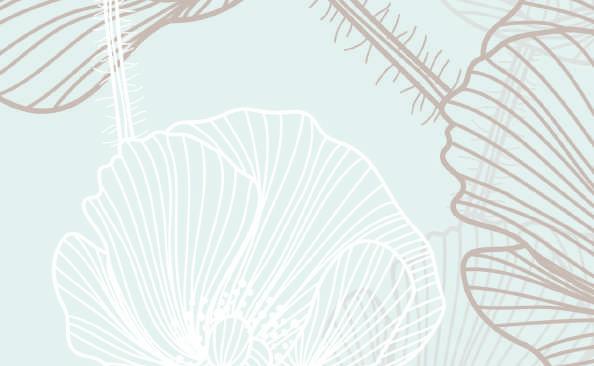
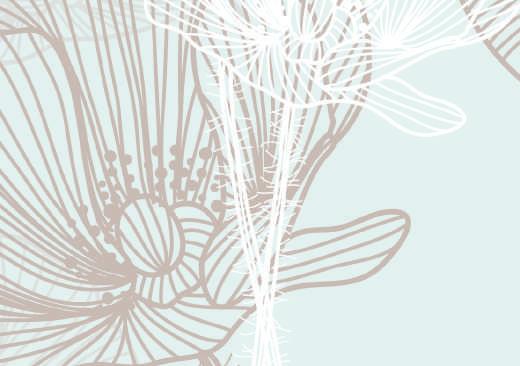

Retirement is not a once-off plan. It is a multifaceted plan that evolves over time. Retirement needs at twenty differ greatly from those at forty or even fifty. Professionals' circumstances change throughout life, and so should their retirement plans. It is vital that you have an experienced financial advisor to guide you through your retirement savings journey.
Why do your retirement needs change?
Life happens, and priorities change. At twenty, you don’t really have an idea of what your retirement will look like; you only have a vague picture in your head. As you reach your forties and fifties, you know the kind of lifestyle you want to lead
in retirement. Events in life, like marriage, divorce, illness, etc., affect retirement. Your priorities also change throughout life.
At what age should you retire?
Deciding at what age to retire is a personal decision. Many professionals’ ideal situation would be to retire early and enjoy life while they are still younger and have their health. For others, it would mean working part-time during retirement.
As you reach your forties and fifties, you know the kind of lifestyle you want to lead
Of course, realistically, this depends on a person’s financial and health situation. Retiring early means saving a more considerable amount of money to provide for a longer retirement.

Also, the age at which you start saving makes a difference. Saving in your twenties gives you around forty years to accumulate wealth and let compound interest do its magic, while beginning in your thirties or forties means saving much more and earning less compound interest. How will your retirement savings be affected?
There are several factors that could influence your retirement savings. Some can be planned for, but others are unforeseen. Factors include:
The country you will retire in. The cost of living will determine your retirement needs.
Family has a significant effect on your retirement savings. Children's expenses, like schooling and extracurricular




deVere France S.a.r.l. are regulated by ANACOFI-CIF and ORIAS which will only recommend French regulated products.

Helen Booth works as a financial adviser for deVere France S.a.r.l and has lived as well as owned property in the Deux-Sèvres region. Having worked in the financial services in the UK for over 15 years, Helen prides herself in being fully diploma-qualified for the services that she provides. Helen has lived and worked in France for over 8 years and enjoys being part of deVere France S.a.r.l., a division of one of the world’s leading independent financial consultancies, deVere Group.
With over $10 billion of funds under its advice and administration and with more than 80,000 clients around the world, deVere Group truly offers a myriad of unique products and notes that are not available anywhere else in the market.

deVere France can advise you on ways to help safeguard and increase your wealth, as well as helping with HMRC-recognised pension transfers to a Qualified Recognised Overseas Pensions scheme (QROPS) to give you potentially more flexibility in your pension plans.
If you would like to know more about how deVere France can help you, contact
Helen
: +33 (0) 77 171 2879 : helen.booth@devere-france.fr
activities, will drain your disposable income and leave less for retirement savings. Even taking care of adult children or parents will put a strain on finances.
Life events like marriage, divorce, having children, or falling ill will affect financial requirements and commitments.
Wealth changes. You might inherit money, which could have a significant impact on your retirement savings.
Moving to another country could seriously affect your retirement savings as the country in which you saved for retirement
might have a lower or higher cost of living than the country you now live in or will retire in. This means you might not have enough saved for retirement in your new country, e.g. professionals moving from a weaker economy to one with a major currency, like moving from India to Europe. The Indian rupee is worth much less than the euro.
Why should you review your retirement plan?
Life happens, and a retirement portfolio needs to be rebalanced and reviewed regularly to ensure it is on track according
to retirement goals and risk profile. Don’t forget the need for a good tax-efficient portfolio and structure. Your financial advisor is essential in protecting your money and keeping it working for you. This means adapting to the changing financial markets and letting your retirement plan evolve.
Please note, the above is for educational purposes only and does not constitute advice. You should always contact your advisor for a personal consultation.
* No liability can be accepted for any actions taken, or refrained from being taken, as a result o f reading the above.










In the rich tapestry of life, families often span across borders, and for those residing in France, securing legal documentation becomes a paramount task. The EU Family Member Carte de Séjour is a vital document that grants family members of EU citizens the right to reside and work in France. This comprehensive guide aims to demystify the process of applying for this essential document through the Agence Nationale des Étrangers en France (ANEF) website.
What is the EU Family Member Carte de Séjour?
The EU Family Member Carte de Séjour is a vital residence permit issued to family members of European Union (EU) citizens. This document facilitates legal residence and the right to work within the host country. One noteworthy feature of this Carte de Séjour is that family members do not require a visa to enter the country; instead, they must apply for the residence permit within three months of entering France. This provision streamlines the process, allowing family members to establish their legal status swiftly upon arrival. It serves as a testament to the EU's commitment to fostering the free movement of its citizens and their families within the Union.
1. Create an Account
Start by creating a user account on the ANEF website. This account will serve as your hub for tracking the progress of your application and receiving important updates.
2. Select the Appropriate Option
The success of your application hinges on the accuracy and completeness of your supporting documents
Once logged in, navigate to the residence permit section, and choose the form for the EU Family Member Carte de Séjour. Make sure to select the correct category based on your relationship, as different options are available for spouses, children, and other family members.
3. Gather Required Documents
The success of your application hinges on the accuracy and completeness of your supporting documents. Commonly required documents include a valid passport, proof of relationship (such as marriage or birth certificates), proof of residence, evidence of financial means, and proof of private healthcare.
4. Complete the Application Form
 ANGLO FRENCH HELP contact@anglofrenchhelp.com
ANGLO FRENCH HELP contact@anglofrenchhelp.com
be generated, serving as proof that your application is under review.
ANEF's website provides a user-friendly interface for tracking your application's progress. Log in to your account regularly to check for updates. The system will notify you if additional documents are required or if a decision has been reached. Patience is crucial during this stage, as processing times can vary.
Should processing delays exceed the anticipated time frame, the Préfecture will send you an 'attestation de prolongation d’instruction' via your ANEF account, providing coverage for your stay in France during the extended processing period. Subsequently, you will be scheduled for an appointment at your Préfecture to have your fingerprints taken.
Upon approval of your application, you will obtain an 'attestation de decision favorable,' which, once again, ensures your legal stay in France while your Carte de Séjour is in the process of being printed.
Applying for an EU Family Member Carte de Séjour on the ANEF website in France is a structured process that demands attention to detail and a clear understanding of the requirements. By creating an account, selecting the correct form, gathering the necessary documents, and diligently tracking your application, you can navigate the complexities of obtaining this crucial residence permit. Patience and thoroughness are your allies on this journey towards securing a legal and stable life in France. If you have any questions about the process or require any help, please don’t hesitate to reach out.
Understanding the ANEF Website ANEF, or Agence Nationale des Étrangers en France, plays a pivotal role in processing residence permits for foreigners in France. Navigating their website is the first step in your journey to obtaining the EU Family Member Carte de Séjour.
Fill out the online application form with precision. Provide details about your identity, your relationship to the EU citizen, and your intended residence in France. Double-check all information before submitting the form.
5. Submit the Application
Once the form is complete, submit your application electronically through the ANEF website. A confirmation receipt will


OWNER: CAST T: 05 45 84 14 94 lindseyqueriaud@outlook.com
Everyone living in France must complete an income tax return. All income is to be declared even if you have paid tax on it in the UK OR abroad. If you live in France for six months or more of the year, this is obligatory. If your main assets are here or you have your principal residency here, you are seen as a French tax resident. You are therefore liable to complete an annual self-assessment return in France every May. You are required to declare all your income, whether earned in France or abroad or taxable in France or abroad.
4. Tax rebates. If you are taxed here you can reclaim tax paid in the UK on the period 2022/2023 and 2023/2024.
5. Tax exemption. You can apply for tax exemption on income not to be taxed in the UK. This can be interesting, where, for example, you have UK rental income. This means that the whole of your tax allowance can be moved on to this income to reduce your UK tax bill.
6. Taxe d’habitation. You are exempt from ‘taxe d’habitation’ if your address is registered as your principle residency. The completion of the income assessment defines your home address.
7. Grants for home improvements. If you wish to benefit from any grants, you need to give the ANAH (the agency that deals with the attribution of grants), your fiscal number and your fiscal income calculated from your self-assessment.
If your main assets are here or you have your principal residency here, you are seen as a French tax resident
I encourage clients to complete a tax return even if they have been living in France for less than 6 months in 2023 for the following reasons:
1. Tax in France is less. Generally compared with the amount of income tax paid in the UK, you win here. Also, the French tax authorities evaluate the income for a short period, which your first year often can be, as if it was a whole year, so you are in a win/win situation.
2. Tax residency. It is important to define residency as rapidly as possible so that the French tax authorities know who you are and what your family situation is.
3. Visas. One of the ways to prove residency, income, and the number of years of residency is through the completion of your personal tax assessment and the production of the ‘avis d’impôt sur le revenu’.
8. Tax credits on home help. If you have had any home help, such as cleaning or gardening, you can benefit from a tax credit. The tax credit is 50% of the cost incurred and is deducted from tax due or rebated.
There are other advantages too:
● Evaluation of social/financial aid. School/university grants, ‘prime d’activité’, home assistance for elderly people etc. Your rights are calculated from your fiscal income. This is collated via your ‘avis d’impots’.
● Access to loans/credit. Unlike in the UK, all access to credit is based on your fiscal income; if you don’t complete a return and have an ‘avis d’impots’ (the calculation of fiscal income and tax due) you can’t borrow.
● Capital gains on your French home. If your home is here, then you should not pay capital gains on that property. The notaire will ask for a copy of your last ‘avis d’impots’ to define that the property is your home.
I hope that this has made you realise the importance of your tax return.

Yes, it’s that time of the year again when we start receiving the dreaded income tax form to fill in (from mid-April to midMay)! Despite monthly payments taken at source (prélèvement à la source), you still have to fill in a form!
As the forms were not available at the time of writing this article, I am giving you a prelude on French income tax. I will be explaining who must fill in a tax form, what revenue you have to declare, how the double taxation treaty works between France and the UK, and lots of other information. Next month, when the new forms are available, I will explain how to fill them in in detail.
Who has to fill in the tax form:
Basically, everybody who is a French resident (lives in France more than 6 months per year) whether you are employed, self-employed or retired and
If it is your first time, you have to go to the Trésor public office
even if you are obliged to pay taxes in the UK. Also, non-French residents who have rented property in France.
If it is your first time, you have to go to the Trésor public office (tax office) and ask for the forms, which are available from the first week of May. Or you can download them from the tax office website.
The reason we still fill in a form is because of tax advantages such as children, employing a cleaner, etc. If you have children or a spouse earning much less than you it will lower your taxable income as you are taxed as a family not an individual. Adults count as 1 point, the first 2 children as ½ point each, and the third child and so on as 1 point. You then divide the total revenue of the family by the number of points you have to know what your taxable income is. Unmarried couples (and not PACSed) must fill in a tax form each.
When:
You fill in a tax form one year after, meaning you declare your revenue of 2023 (Jan to Dec) in April-May 2024. So, if you officially moved to France last year (2023), then you fill in your first French tax form
in April-May 2024 on which you declare your revenue of 2023.
Since 01/01/2019 we are now taxed at source (monthly amount taken from our current account or percentage of salary) and the amount was determined by the tax paid in 2023 for the year 2022. The form we fill in this year will determine if we have paid the right tax in 2023 and the new amount which will be taken monthly from 01/01/2025. If you paid too much, they will reimburse you or reduce your monthly payments, if not enough they will increase the monthly payments till the end of the year!
If you moved to France in 2023, you will pay two years of tax: 2023 & 2024. You will pay a bill for 2023 at the end of August in one go and have another bill for 2024 which will be taken monthly from September to December (amount of 2023 tax bill divided by 4). Then from 2025, it will be a monthly amount (2023 tax divided by 12). You can fill in a form now to start paying those amounts monthly from now instead of September (form 2043) which you can download from the tax office website. Only do it if you think you will pay tax. For your information, the tax threshold for 2023 for a couple was around 25,000€.
social charges on interest and to enter the amount of income taxed in the UK (civil servant pension, government pensions, rental income from UK- Box 8TK).
2042RICI: To declare tax credits like using a cleaner or gardener, or children attending college, lycée or university.
2044: If your rental income is more than 15,000€ per year, that is the form to fill in.
3916: To declare your bank account abroad. Failure to do so could carry a fine of 1500€ per bank account not declared, much more (10K per account) if the account was in Gibraltar, Isle of man, Panama, basically countries not agreeing to financial transparency. All they want is the name and address of the bank and the account number.
If you paid too much, they will reimburse you or reduce your monthly payments
The exchange rate for 2023 is 1.15 (that is the average of last year). Your local tax office can give you an exchange rate, but you don’t have to use it. Use it if it is lower than 1.15.
If your pension has been directly transferred in euros to your French bank account, just add up all the figures.
What income:
The deadline to send or deposit your paper tax form is 20th May 2024. The online declaration deadline is 25th May 2024 for departments 1 to 19 (Charente is 16), 1st June 2024 for departments 20 to 49 and 8th June 2024 for departments 50 and above (Deux Sèvres is 79 and Vienne 86).
What forms:
Hopefully, if they have not changed them again this year, these are the forms you might need:
2047: This is the pink form on which you enter your revenue from abroad and you then transfer all those revenues onto the blue form called 2042.
2042: The blue form that everyone has to fill in.
2042C Pro: The one to fill in if you are self-employed or if you rent a gîte or chambre d’hôte.
2042C: This is the form you need to say you have an S1 form and avoid paying
Pensions (even if they are taxed in the UK like army, police, civil servant), salary, interest on savings (even ISA, which are not tax free in France), rental income, dividends, bonds, etc. Basically, anything that has been earning money or making money for you.
Double taxation:
There is a treaty between France and the UK meaning that you cannot be taxed twice. To avoid being taxed twice, you must fill in this form: United Kingdom/France Double Taxation Convention (SI 2009 Number 226), which you can download from the internet. However, you can only fill in this form once you have been taxed in France as you must put your French tax reference on the form. Indeed, once the form is filled in, you take it to the French tax office, they stamp it and either they send it to Paris, who send it to the UK, or they give it back to you to send yourself to HMRC (depends on the office). Then 6 months later, you get reimbursed the tax you paid in the UK
since you arrived in France and stop being taxed at source in the UK.
Note that ex civil servants, police, and military are taxed in the UK for their pension related to that government job! But when they fill in the French tax form, they fill in that pension revenue on a special section which gives them a tax credit equivalent to what the tax would have been on it in France.
Avis d’imposition:
This is a very important document not to be lost as it proves you are a French resident, and it also proves your revenue. If you want to get some social help in France (ACS, CAF, RSA, etc), you must show them this document. Some ISA savings accounts (LEP) are only available if you can show this document to your bank as they are only available for people with low income. It is the bill of your income tax and you receive it in August.
www.impots.gouv.fr
This is the official website of the French tax authorities. You can download tax forms, fill in your tax form online, and also set up monthly direct debits for your taxe d’habitation and taxe foncière. You can also adjust your income tax monthly payment from your personal account. Note that the monthly amount is determined by your income without the tax deduction so some of you probably should not have paid. Note that you can go online and change it if you think you should not be paying as much or nothing at all. This is often the case for people who have rental from UK or civil servant pensions. Note that since 2019, everybody must fill in their income tax form online. You cannot do this if it is the first time you fill in a form.
Help:
Free help for filling the tax form for all my customers will be on 14th & 16th May all day in Ruffec (not lunch hours! And yes 2 full days as it has become too popular!) and on 15th May all day again in Chasseneuil sur Bonnieure.
Conclusion:
It is an obligation! So, if you live in France, you must fill in a French tax form. Next month, when the new forms are available, I will explain how to fill them in and give you dates and places where I will be available for free help so do not panic yet!
22


 DONNA STOKES
FREELANCE PA & ADMINISTRATIVE SUPPORT donnastokespaservices@gmail.com
DONNA STOKES
FREELANCE PA & ADMINISTRATIVE SUPPORT donnastokespaservices@gmail.com
We’ve all heard about ‘work-life balance’ being something we should be achieving, or at the very least, aspiring to – but what does it really look like?
Whether you’re employed or selfemployed, the concept of work-life balance often feels elusive, and when you’re your own boss, the lines between work and personal life can blur into what can feel like an unachievable chaotic jumble of tasks, deadlines, and responsibilities.
Put simply, work-life balance means equally prioritising your work and personal life. But that doesn’t mean you have to divide your time equally between the two, and what this ‘balance’ looks like in reality will vary from person to person. There are a number of factors which can impact negatively on your work-life balance, with the most common being too many responsibilities (at work and/or at home), long working hours, and changes in home life (eg. having a child, taking on caring responsibilities).
Let’s start with why it’s important, and the consequences of getting it ‘wrong’. Having a work-life balance allows you to enjoy and make the most of all aspects of your life, not just work.
Your family, friends, hobbies, health, ‘me-time’, and other priorities are each equally important. Finding some kind of equilibrium with it all offers many benefits, including less stress, increased productivity and creativity, an improved sense of health and well-being, and ultimately a reduced risk of burnout.
▪ You’re feeling stressed and anxious a lot of the time
▪ You think about work a disproportionate amount of the time
▪ You don’t have any hobbies or interests outside of work
▪ You check work emails/respond to work calls outside of normal working hours.
Does any of this sound familiar? It’s fair to say that many of us will go through times in our lives where this work-life balance is out of kilter, but the key is in being able to identify it, call it out, and put plans in place to do something about it. Easier said than done, yes of course. There is no ‘one size fits all’ solution, and some things will work better for some than others, but here are some thoughts and ideas to help get some balance back in your life:
Accept that it takes time: finding a solution that works for you won’t happen overnight and is more likely to be a work in progress. And it won’t be perfect, even when you think you’ve got it sussed - things (life!) will come along and knock you off kilter from time to time – but that’s ok, tomorrow is always another day and achieving true balance is a journey, not a destination.
The key is in being able to identify it, call it out, and put plans in place
If you’re unsure whether you have a healthy balance between your work and personal life, here are some signs to look out for:
▪ Work is taking up most of your days, often including weekends
▪ You’re not sleeping well
▪ You’re having more headaches, anxiety, and feeling of overwhelm
▪ You feel emotional a lot of the time
▪ You’re more short-tempered and less patient than normal
▪ You’re not finding time to look after yourself properly (eg. not finding time for physical exercise, to cook from scratch, for medical appointments etc.)
▪ Friends and family are complaining that you don’t spend enough time with them
▪ You’re not meeting deadlines
Set priorities: this isn’t about having ‘to do’ lists for work, or lists of chores for home. This is about identifying what is important to you and things you want to include in your life going forward. It could be a hobby, regular exercise, family time or even more sleep. Only once you’ve identified these things can you then start to plan to incorporate them into your daily life.
Play to your strengths: you don’t have to (and often physically can’t) do it all. Work out what you’re best at and look to delegate where you can, whether it's at work (using specialists and sub-contractors) or at home by sharing chores and accepting what doesn’t get done.
Practise saying ‘no’: this can be a challenge and feel uncomfortable to a people pleaser but it’s essential in your quest to achieve balance. Saying ‘yes’ to somebody’s request for your help/time/commitment in reality means saying ‘no’ to something else for yourself. As challenging as it may feel, learn to say ‘no’ with confidence and to not spend any time regretting having done so.
Set working hours and stick to them: Ok, so it doesn’t have to be 100% of the time,
but having some firm boundaries in place, particularly ones you can impart to customers, colleagues, and the like, will give much better structure to your days. Publish them, communicate them, and reinforce them everywhere you can (eg. on your website, Facebook page, email signatures etc) and make use of automated replies and ‘out of office’ notifications. Rarely are things so urgent that they can’t wait until the following day (unless you’re a tradesperson who specifically deals with out of hours callouts in which case you can have alternative means of contact for emergencies only). This can be particularly important for those working from home where the lines can easily become blurred.
Make time for you: schedule your personal time in your calendar, whether it’s going for a walk, having coffee with a friend or spending an hour on a hobby or interest. Treat it like an appointment and plan around it. Even the simple act of planning and writing it down can help strengthen your commitment to do it.
Look after yourself: book those non-urgent appointments you’ve been putting off because you’re ‘too busy’ (eg. a dentist checkup, an eye test etc) and set aside time to look after yourself better (planning in shopping and meal preparation, batch cooking, using slow cooker recipes etc) – it all contributes to you regaining control and feeling better from the inside out. Aim to get some regular exercise and fresh air in whatever form works for you, and find ways to nurture friendships and relationships which can often suffer when your balance is out.
Take a break: and not just a coffee or lunch break. Plan time off, even if you’re not able to go away on holiday. Time off is important – it helps to refresh your mind, recharge your batteries and you’ll come back with renewed energy and focus. If you’re self-employed, sometimes there can be a reluctance to take time out but you’ll find that customers understand and expect businesses to shut for ‘holidays’ (consider France in August – you get the picture!). As mentioned earlier, there is no magic formula to finding balance, and yours may look and feel very different to that of your friends or colleagues – there is no right or wrong. It’s up to you to set your priorities and create a lifestyle balance that works best for your needs. Remember that your work-life balance is ultimately a result of your own choices, so choose wisely.
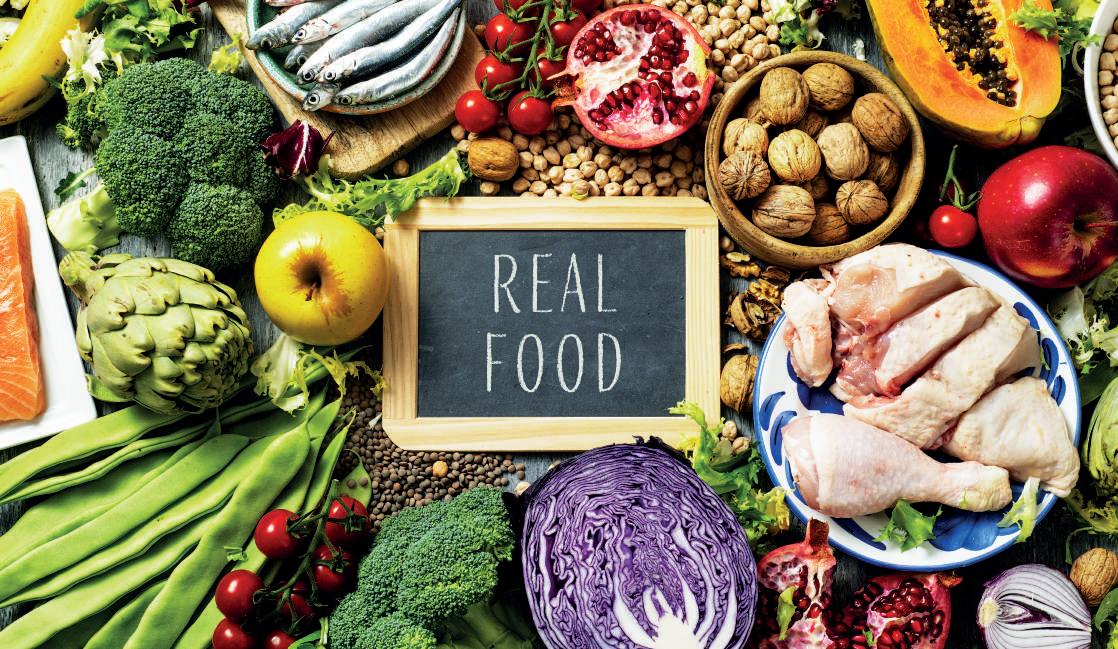
UPFS ARE CONVENIENT AND HEAVILY MARKETED BUT WHAT EXACTLY ARE THEY AND WHAT IMPACT ARE THEY HAVING ON OUR HEALTH?
At the end of February, the BMJ (British Medical Journal) published a paper showing conclusively that ultra processed foods are directly linked to cancer and a whole host of other problems including premature death, mental illness, gastrointestinal problems and diabetes. This month I want to show you exactly what ultra processed foods are and to

dispel the myth of ‘a little of what you fancy does you good’ when it comes to industrially-produced food.
By definition, UPFs are foods that you wouldn’t be able to recreate in your own kitchen. Think of brightly packaged ‘foods’ that are marketed heavily at our children. They have to be advertised in bright packaging, with smiling faces printed on

Amanda is a registered Naturopath and Nutritional
and diet.
Private Online Clinical Practice.
www.amandakingnd.com
Email:nutrition@amandakingnd.com
billboards and with relentless bombardment through their iPads, phones and TVs. Usually these foods are beige and empty of nutrients or the packaging boast of how many health benefits the food has through all the fortification of vitamins and nutrients they proudly include. The reality is that many of those vitamins


aren’t even available to the body and sometimes they can cause harm (for example, folic acid).
Research shows that 12% of children and 14% of adults in the UK population are addicted to UPF (Source: BANT) In the US 58% of all food consumed is UPF.(Source: Food Navigator). Ultra Processed Foods may be as addictive as smoking (Source: BMJ).



Here is a list of everyday foods that you may not have known were UPF and come under the category of junk food. You may well be surprised by some of the following!
▪ Breakfast Cereals - including those pushed as healthy like shredded wheat, cornflakes, bran flakes and weetabix.
▪ Energy drinks - of any kind
▪ Breakfast bars
▪ Healthy snack bars (coated with toxic sugars and oils)
▪ Baked beans, tinned soups.
▪ Canned sauces
▪ Crisps, chocolates & sweets
▪ Packaged biscuits (even many of the ‘healthy’ oat biscuits with raisins in them)
▪ Some processed meats
▪ Bread, pasta, couscous (wheat is now fortified with folic acid in many countries)
▪ Doughnuts/baked goods
▪ Ready meals - don’t touch them
▪ Gluten-free foods or free-from foods
When we break it down, a process is anything that can happen to food. A regular vegetable growing in your garden, without the use of chemicals, pesticides or fertilisers, is harvested when it’s ready, prepared in your kitchen and then goes through a small process of being washed, chopped, baked/roasted/mashed or whatever you do to create something from it.
Think about the processes even just a commercially, chemically-grown vegetable (non-organic) goes through. In the soil it is sprayed with certain nutrients as the soils are so overworked and depleted they have next to no real nutrition left and vegetables need help to even grow there. They are sprayed with chemicals to kill pests/bugs and those chemicals make their way into the body of the plant which means that they are impossible to completely remove prior to eating. They



are mechanically harvested, washed in chlorine, stored in a cool storage sometimes for months, transported to a factory which is sometimes many countries away; disinfected/washed, boiled, chopped, or added to other heavily processed foods. Then it could be irradiated, microwaved, have chemicals added to it to preserve it, flavour enhancers or stabilisers added to it, wrapped in plastic/tin/foil/vacuum packed/dried and then left in the packaging for potentially months or even years. By the time it reaches your mouth, it is a long time since that food was alive and nutritious.
We are sat on the brink of an epidemic of cancer. I believe cancer is largely preventable and is a disease of metabolism
and therefore something that we can hugely improve with diet and lifestyle and finally the research is showing us how our diets are responsible for this in part. Prevention is worth a thousand cures. So what can you do? Start with these basic suggestions…
1. Make your own base sauces, like tomato with olive oil, onion and garlic. Batch cook and freeze in portions which means you don’t have to buy costly and inferior sauces in jars (with poor quality oils).
2. Get a slow cooker. For busy people a slow cooker can be a godsend. Just load it up on a morning and put on a low heat and when you get home from work, you have a hot, healthy and fresh dinner ready to go.
3. Have healthy snacks in the fridge. Hard boiled eggs, cold meat cuts, leftovers, potato salad, cheese cubes.
4. Batch cook soup on a Sunday and freeze in portions for the week so that you get plenty of vegetables! Feel free to contact me for individual consultations, please see my advert on page 29.
References: www.bmj.com/content/383/bmj-2023-075354 www.bmj.com/content/384/bmj-2023-077310
These articles are for information purposes only and do no constitute personal advice. For personal advice, reach out to your healthcare provider.





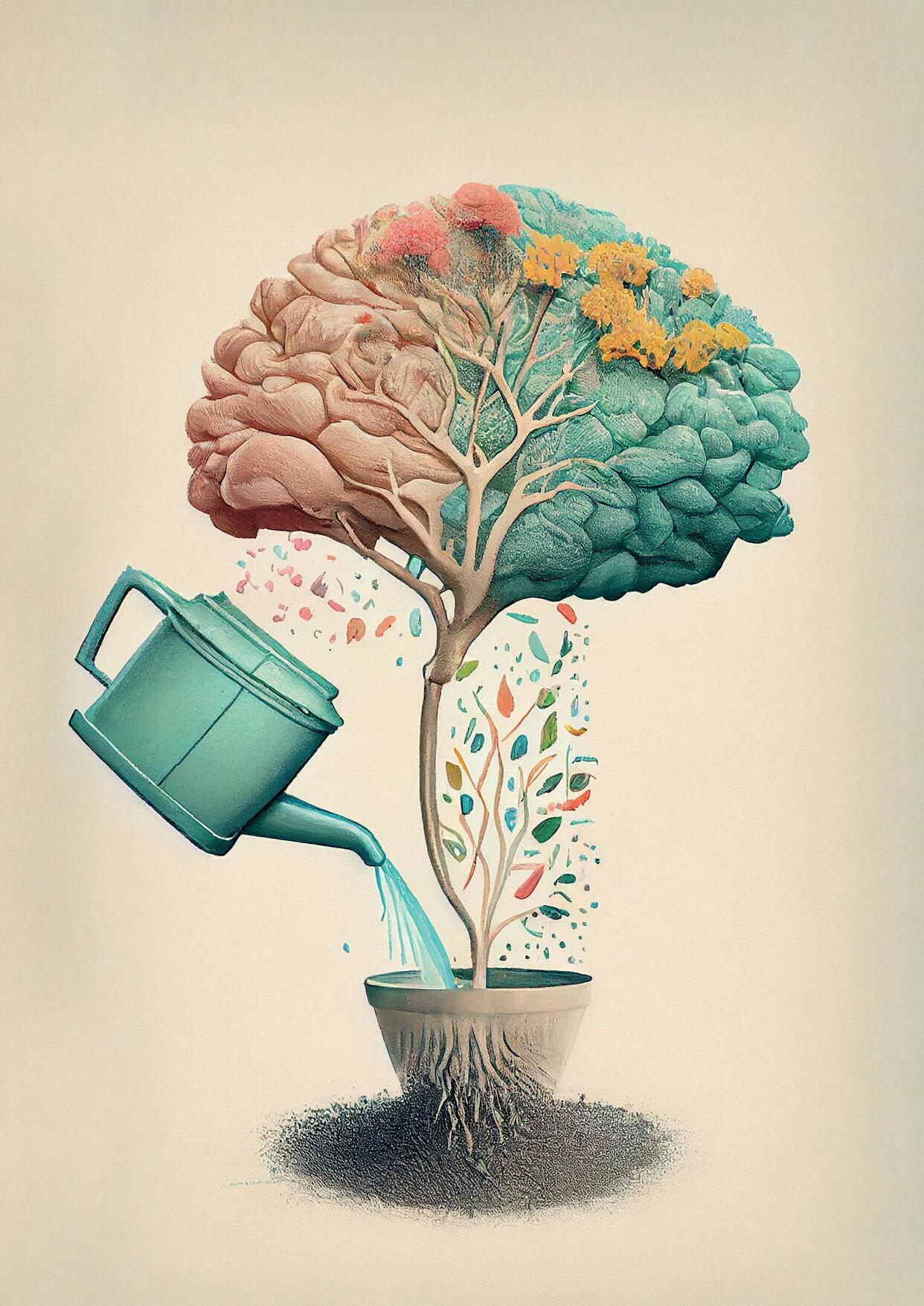

HAVE YOU EVER NOTICED HOW OFTEN YOU FOCUS ON WHAT CAN GO WRONG DURING AN ORDINARY DAY?
It often goes unnoticed, it is almost subconscious. ‘Did I lock the door when I went out?’ or ‘Better check it is not going to rain’ or ‘Be careful, that’s a bit steep to climb on, you might fall!’ We are actually genetically designed to do this, to always check and be cautious. If you think about it, thousands of years ago when we were roaming the woods to look for food as hunter-gatherers, we had to pay attention to all the dangers and to what could go wrong, simply to stay alive! So to some extent, it makes sense.
We don’t roam the woods anymore looking for food or avoiding bears and society has changed considerably but our genetic makeup hasn’t.
We still focus on what can go wrong, and up to a certain level that’s healthy, it keeps us safe. It is a ‘natural’ reaction and part of being human.
Things change, however, when one develops low mood or depression. If you suffer with this for a short while or are chronically feeling low or depressed, then this focusing on the negatives happens in a more extreme way. You can develop a tunnel vision and start to focus only on what is wrong, what is missing, what you are not able to do or what you feel overwhelmed by. Nothing is right and all is doom and gloom. Your focus is completely on the negative and there is nothing left for positive experiences or to focus on what can go right in the future. Our impression of our life and the world is properly out of balance. The scales tilt completely one way: life sucks!
Under different circumstances we would get energy from the nice things in life. From achievements, social interactions, warm sensory experiences, simple things like sunshine, the smell of coffee or a purring cat, a hug from a friend…. But when we are depressed we don’t even see those things anymore, there is only the negative at the end of the tunnel and we simply pay no attention to anything outside the tunnel of doom. By not paying attention to the positive, or not being able to see it, we miss out on the energy that would enable us to better deal with all that negative stuff.
This is where consciously shifting your focus comes in. Where the focus goes, the energy flows. So why not focus on the positive rather than letting all that energy be drained by negative thoughts?
I am not suggesting we look at life through rose tinted glasses and ignore all the negatives. That simply doesn't work. Anticipating situations that could go wrong, or existing difficulties that are real, need to be dealt with or at least considered. But by shifting your focus more to the positive again you gain the energy to do so and feel lighter. You actively start to make the depression lift, even if it is just a little or for a while.
Remember, your depressed self will push back and try to ban more positive thoughts from your mind. It wants total control, it doesn’t even believe feeling better or lighter is even a possibility. It is conditioned to be a spoilsport and ignore every positive.
 ByRafaëlDupré
ByRafaëlDupré
Originally from Belgium, Rafaël has run private practices in the UK and France, working with individuals or couples on a huge range of issues
rafael@a-therapy.com t. 07 83 23 77 23 Advert on page 30
found 8 positives today!’ Or you can complete the list with things you feel grateful for.
In the first instance, it makes you feel better about a day that you thought was a complete write-off. You realise not all was bad and go to sleep feeling slightly better, lighter even.
You can develop a tunnel vision and start to focus only on what is wrong, what is missing, what you are not able to do or what you feel overwhelmed by
Luckily, whatever was conditioned can be reconditioned and you can recondition your negative thinking brain starting with a simple exercise that I often recommend to my clients. Put a small notebook by your bed, choose a nice one, one that looks good and you like the feel of as you will be writing nice stuff in it. Every morning you write down one thing about that day that you look forward to or that could be nice. Something simple like, ‘I will take the dog for a nice walk’ or ‘I can watch another episode of my favourite show’. You start the day with a positive thought rather than scrolling through the news or getting lost in negativity straight away.
At the end of every day, before you go to sleep, you write down 10 positives about that day. Just bullet points, however small. Somebody smiled at me, the sun felt warm on my skin, I heard the first nightingale, the dog was silly on our walk, I made a tasty leek and potato soup, the water in the shower felt nice on my back.… And if you struggle to find ten and only get to eight, number nine could be, ‘I already
Secondly, after about two weeks of doing this exercise, you will start to notice nice things during the day and say to yourself, ‘I need to remember this so I can write it in my little book of positives tonight’. And that’s where you need to be, you start to pay attention to the positives again in the moment, as they happen. There is life outside the tunnel of negativity. The scales start to balance out again. Little bursts of positive energy reach your brain, small explosions of serotonin during the entire day enable you to better deal with the more difficult emotions or tasks that day. Serotonin is one of our ‘feel-good hormones’ which makes us feel happier, lifts our spirits and lightens our moods. And you can stimulate the production of that feel-good hormone by simply shifting your focus. It is amazing how our mind and body work together.
Is it a bulletproof remedy to obtain a happy, carefree life? Probably not entirely. But it might be the start. It can offer you that window on a better, more positive and fulfilling life again. It might lift you enough to believe again that you can feel better, to undertake further steps to generally feeling more positive and proactive. To achieve something we need to take the first step. This could be your start to feel lighter and create a more qualitative life again, to feel content.
Many of my clients continue this habit of writing in their little book of positives long after they finish therapy by the way. If nothing else it is a reminder that there is good in every day, a nice way to reflect and switch off for the night with a little smile on your face.


THE EXPLOSION OF BUDS ON THE TREES, BLOSSOMING SPRING SHRUBS, DAFFODIL, TULIPS, AND MUSCARIS POPPING UP LIKE SO MANY SURPRISES FOR THE GARDENER, MAKE THIS SEASON A CELEBRATION!
April is one of the busiest months for sowing both flower and vegetable seeds. Sowing at this time gives the plants time to grow to be ready to plant out during May. Don’t worry if you think this may be too late - in my experience plants will usually catch up no matter when they are planted, and earlier planting means that you potentially will have lots of small plants to protect and water until they are ready to go out.
First of all, seeds need an appropriate compost which has a fine tilth. Seed compost is fine, but is also more expensive. If you use standard potting compost it is worth sieving it first to remove any small pieces of wood or bark sometimes found in plant compost, as these will disturb seed roots as they start to grow. It is also possible to sow seeds into inert mixtures such as vermiculite and coir – for seeds the structure of the medium is more important than nutrition, as each seed contains sufficient energy and nutrients to sprout and grow the first leaves. At this stage the growing medium is the most important factor, as seeds need air and water to germinate, and a light compost or vermiculite has spaces for air but also will hold moisture. Another option is to add vermiculite to compost to lighten the structure of the medium. Once your compost is ready, water the mixture to make it evenly moist but not too wet. You should be able to take a handful of compost and squeeze it and it should hold its shape but not drip water. If it is too wet it will lack oxygen and may be prone to fungal diseases. Now put this mixture into pots or seed trays and gently firm down to remove prominent air pockets.
periodically to let fresh air in, before recovering the trays.
As the seedlings emerge there will be two very simple leaves, followed by two ‘real leaves’ when they are showing it’s time to transplant the seedlings. It’s a good thing to plant the seedlings while they are still small, and to plant them deep. Don’t let seedlings get too big before transplanting: small plants hardly notice the change and then race away, but leggy seedlings can be shocked by the transplant and will take time to recover. For transplanting now use a standard potting compost, as this contains some nutrient to support further growth. Bury the stem so that the compost is level with the base of the two real leaves. These small plants will now grow on until ready and large enough to plant out, but don’t forget to look at them regularly and water probably once a week, preferably from below. At this stage also check for disease and pests. One of the most common diseases at this stage is damping off when the soil is too wet and there is no air for the plant rootsthe plants collapse and they die off. These seedlings must be removed as soon as spotted.
Bursting with nectar and pollen, the many small flowers that make up each inflorescence attract honey bees and butterflies alike
Next to the planting! Check on the seed packet for two things – the depth for planting and the temperature for germination. Some seeds, such as lettuce, need light to assist germination so these should not be covered after sowing, but at the other end of the spectrum, larger seeds, such as sweet peas, should be pushed into the compost to about their own depth.
Once the seeds are sown and, if required, covered lightly with compost, gently water the compost and cover with some form of plastic cover. This can be a shaped plastic cover to fit the seed tray or a plastic bag fastened loosely. Put the tray somewhere at an appropriate temperature and with plenty of light to germinate. Once again seeds vary and do not all germinate at the same rate. The seed packet will give you an idea of germination time. Check your seeds regularly and remove the covers
The main pests which appear at this time of year, as if from nowhere, are slugs and snails! Now is the time to start your action to ‘manage’ these frequently unwelcome ‘visitors’. In damp areas, if the soil is heavy, slugs are pest number one! They shelter by day in moist, dark places out of sunlight and hidden from predators such as birds, frogs, and toads. They hide under leafy shrubs, walls of loose stones, old wooden planks, polythene mulches, long grass, and weeds. Slugs and snails can even get over copper bands and eggshells when it’s raining! So look around your garden and remove all the hiding places lying around the garden, alongside removing weeds and overgrown plants.
On a more positive note, at this time of year we also have the privilege of helping pollinating insects. These gardeners’ helpers, who have over recent years seen their numbers drastically reduced by the use of pesticides, can be helped by planting nectar-rich flowers of the Apiaceae family. These are very popular with pollinating insects and are attractive in the ornamental garden as well as useful in vegetable gardens. The Apiaceae family is a large family previously known as "umbellifers" (referring to the umbel-like (umbrella) shape of their flower heads). They have very indented and light foliage. This plant family is vast with more than
 By Ronnie Ogier
By Ronnie Ogier
Ronnie is a passionate gardener and now loves sharing her years of experience of success and failures in her own garden and sharing it with you. Also a keen runner, having been bitten by the ‘Couch to 5K’ bug!
3,000 species, giving a rural atmosphere to the garden, with their tall delicate heads lightening the flower beds and adding an extra dimension to the vegetable garden with aromatic plants such as fennel, coriander, anise, cumin, and parsley. Plants from this family are very easy to grow. They tolerate most soils as long as drainage is good, and their flowers provide nectar for insects as well as their leaves offering shelter to some insects. Some butterflies lay their eggs on the underside of the flat leaves of these plants, which in turn attract ladybirds and hoverflies, whose larvae feed on aphids. Within the Apiaceae family there are plants to suit almost every type of soil and garden location.
How do you use umbellifers in the ornamental garden? If you add plants such as wild carrot, astrantia, and angelica to your garden, not only will you have beautiful plants but you will also provide an insect foraging bar! Always charming, these plants work wonders in a somewhat wild setting in the company of poppies, cosmos, and even roses or asters.
Combined with grasses, these plants are even better integrated. In a bed, they bring a lot of lightness thanks to their very cut foliage like lace and their graceful inflorescences.
Many of these plants flower in spring and summer, when the insect flight periods are at their peak, and they provide shelter and cover for many gardeners’ helpers. Bursting with nectar and pollen, the many small flowers that make up each inflorescence attract honey bees and butterflies alike, but also aphid-eating ladybirds, hoverflies whose larvae feed on aphids, mites and whiteflies, lacewings that will get rid of thrips, aphids, mealybugs, and caterpillars of all kinds. If you like butterflies, you should know that umbellifers, and more specifically fennel and wild carrots, attract the female swallowtail, which lay their eggs under the umbels on which their caterpillars will later feed. Also don't pull out the nettles completely, leave some in an unobtrusive area of your garden as they provide shelter and cover for many other species of butterfly, and after the end of flowering season use the leaves to make manure that will serve as an insecticide, compost activator, and fertiliser at the same time.
Happy gardening!















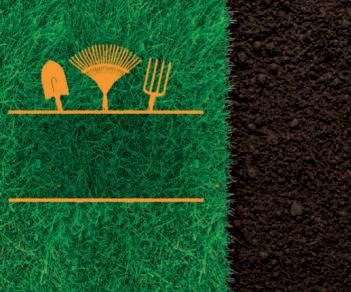










FERTILISERS CONTAIN CONCENTRATED SOURCES OF PLANT NUTRIENTS AND CAN PLAY A VITAL ROLE IN YOUR GARDEN
There is plenty of choice of fertilisers that can be purchased and if you have a look through the range on the shelves of the garden centres, bricos, and even supermarkets, there seems to be a big move towards natural fertilisers and bio (organic) fertilisers. You can buy specific fertilisers (engrais in French) for different types of plant, for example there are rose fertilisers, tomato fertilisers, geranium fertilisers, fruit and vegetable, conifer, citrus, hydrangea etc. So if we grow several of these types of plants in our garden do we really need to buy them all?
Let’s first take a look at what a fertiliser actually is and what they consist of, and compare it with composts, manures, and soil conditioners.
Fertilisers contain concentrated plant food. General purpose fertilisers usually contain a balanced ratio of the three main plant nutrients and often the more minor
nutrients and trace elements as well. It is the equivalent of us taking vitamin or protein supplements in our diet, and they are beneficial for plants when you have very poor soil, or you are cropping an area regularly (such as the potager) and year after year you are planting fast-growing hungry plants that take up a lot of nutrients from the soil which need replacing when you harvest the plants. Fertilisers are also used for plants in containers where there is a limited supply of nutrients in the growing media (potting compost).

Caroline has been a lecturer in horticulture for 20 years and now runs a nursery and ‘garden craft’ courses in the Haute-Vienne at Le jardin créatif

proportion on the nutrient or nutrients that promotes good flowering.
It is the equivalent of us taking vitamin or protein supplements in our diet, and they are beneficial for plants when you have very poor soil
Specific fertilisers such as rose fertilisers will also contain the three main nutrients plus micronutrients and trace elements, but the ratio of nutrients contains a higher
If you read the back (or side) of the packet you will usually see an N:P:K ratio. In general purpose fertilisers this is usually something like 7:7:7, meaning that all three main nutrients are equal. These nutrients are Nitrogen (N), which promotes strong vegetative growth (leaves and stems), Phosphorus (P), which is associated with good seedling and root development as well as overall plant health and disease resistance, and Potassium (K), which is associated with strong flowering and fruiting. Rose and tomato fertilisers, for example, will contain a higher proportion of potassium, and therefore they can be used on any plant on which you wish to enhance the
Caroline Wright Le jardin créatif
flowering and fruiting (flowering shrubs, fruit bushes and trees, etc). Tomato fertiliser is usually in a liquid form rather than granular as this makes it more fastacting and is particularly useful for plants in containers, so it is suitable for your summer containers of bedding plants, geraniums, chilli peppers, courgettes… too.
Soil ‘conditioners’, or soil improvers, are added to the soil in bulk. They contain relatively small amounts of nutrients compared to their volume and are used to improve the structure of the soil as well as improving the water-holding capacity, nutrient retention, and overall soil health by boosting populations of natural beneficial microorganisms in the soil. This is more like the equivalent of us having a balanced diet. Many organic growers and those using a permaculture system prefer to avoid fertilisers and enhance the soil using these natural bulky additives. Wellrotted manure, well-rotted home garden compost, and leaf mould are examples of soil improvers. They can be dug into the root zone or laid on top as a mulch. It is worth noting that these materials are not suitable for potting and containers (you need a sterile potting compost) - they are too strong and rot down too quickly and may contain weed seeds and diseasesthey need to be added to the minerals in your soil to make a balanced growing substrate. If you are creating a raised bed, these materials should not be used without mixing with at least 50% topsoil either. But even in an organic or permaculture system plants will benefit from additional nutrients when we are hoping to produce a good crop of vegetables or fruits, and there
are lots of natural materials that you can use to make fertilisers at home.
Nettle and comfrey ‘teas’ are high in nitrogen and are easy to make. All you need is a large bucket or barrel of water (preferably rainwater) to which you add fresh-cut nettle or comfrey leaves. It is best to crush the leaves or chop them up - the quantity doesn’t need to be exact, but the water should cover the leaves. Leave them in the water for 3 to 4 weeks. At this point the water should be a dark brown colour and it will be a bit smelly! You will need to dilute the solution 1 part nettle/comfrey tea to 10 parts water before using. You can store the concentrate in bottles or tubs after straining the leaves out.
Even in an organic or permaculture system plants will benefit from additional nutrients
(or potash) is wood ash so if you have a wood burning stove you can put the ash directly onto your soil around your plants (once it is cool) or you can spread it onto your vegetable beds over the winter and dig it in when preparing for planting. You can also add all of the above to your general compost heap to enhance the nutrient content of your garden compost.
Phosphorus is a little more difficult to find naturally as it is generally released by soil minerals as they weather and break down, but chicken manure contains fairly good levels, so if you keep chickens, compost the bedding separately to make a manure rich in phosphorus. It also contains a good range of minor nutrients and trace elements.
Potassium can be found in banana peelthey can be simply buried in the soil to release the nutrients slowly over time or made into a ‘tea’ and diluted as with nettle tea. Used coffee grounds are high in both nitrogen and potassium, so if you drink fresh coffee, save these up and simply scatter them on the soil. They will also deter slugs if you place them around your plants. Another big source of potassium
Natural fertilisers are fairly fast-acting but will need regularly topping up during the growing season: liquid feeds every 10-14 days, organic matter such as coffee grounds and wood ash etc, about every 6-8 weeks, wellrotted manure and garden compost just once a year at the start of the growing season. You can also use your grass clippings as a mulch, adding nitrogen to the soil and keeping the soil cool and damp, topping up as necessary over the growing season.



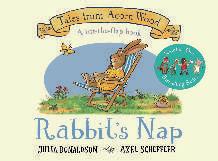

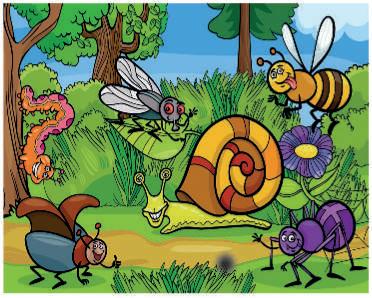


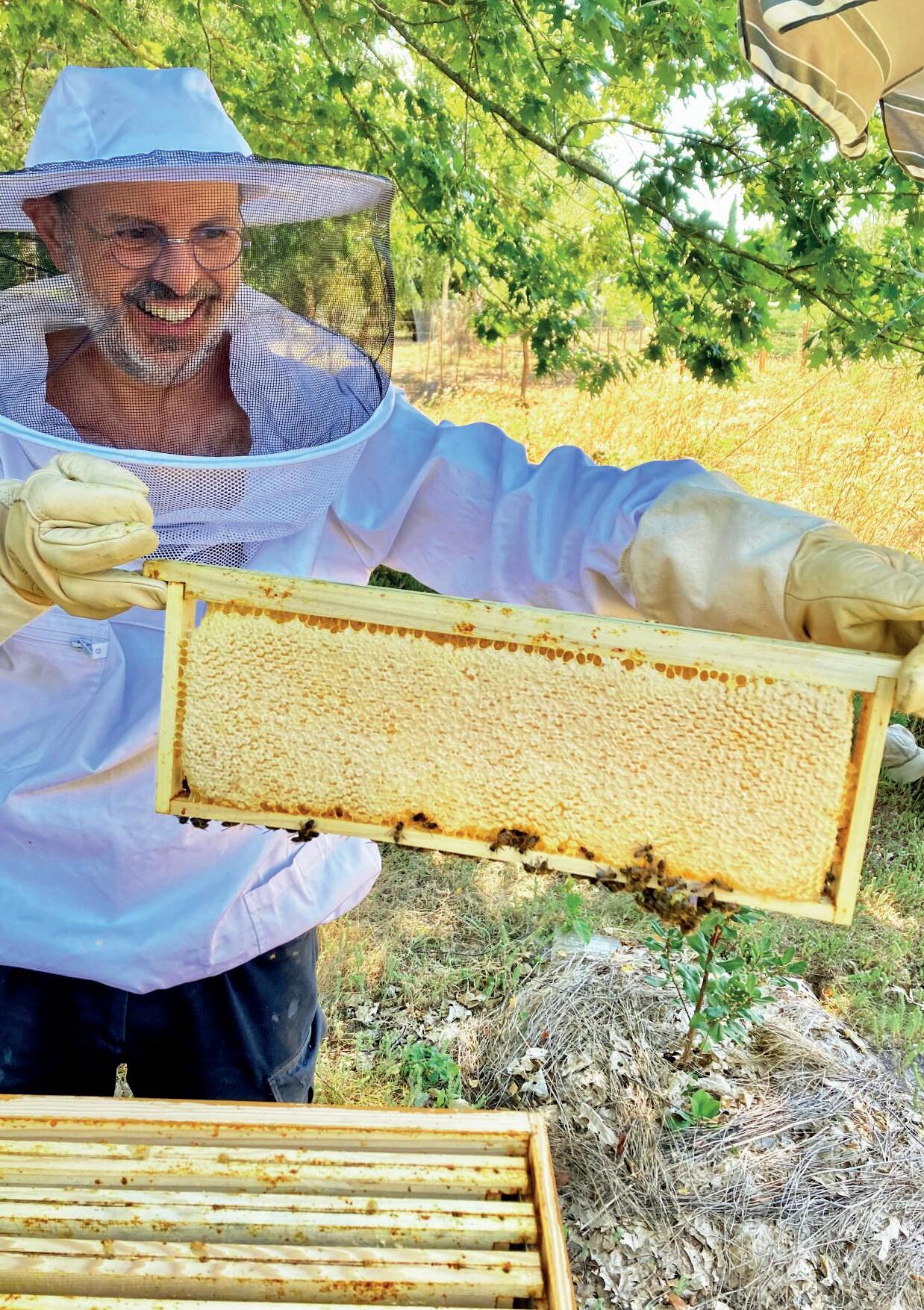


BEEKEEPING
In 1923, Rudolf Steiner, a scientist, philosopher & social innovator, predicted that in 80 to 100 years honeybees would collapse if we continued to manage our bees the way we do.
A phenomenon known as Colony Collapse Disorder (CCD) was brought to the attention of the public in 2006 in the United States. Beekeepers had started losing 30-100% of their colonies for some unknown reason and the adult bees were leaving their hives with all their honey, brood (their young), and pollen stores and simply absconding. Beekeepers in most European countries have observed a similar phenomenon since 1998.
“The mechanisms of CCD are still unknown, but many causes are currently being considered, such as pesticides, mites, fungi, beekeeping practices (such as the use of antibiotics or long-distance transportation of beehives), malnutrition, poor quality queens, starvation, other pathogens, and immunodeficiencies. The current scientific consensus is that no single factor is causing CCD, but that some of these factors in combination may lead to CCD either additively or synergistically” Source: Wikipedia Beekeepers are still struggling. Over the entire year (1 April 2022 – 1 April 2023), beekeepers in the United States lost an estimated 48.2% [40.7 – 56.0 CI] of their managed honey bee colonies - Bee Informed Partnership (COLOSS). The results for the following 12 months will be available at the end of this month. It should be noted that colony losses for European countries are generally much less, hovering around 18 to 20%.
These losses continue even with new synthetic and “organic” compounds added to the list of yearly treatments beekeepers must use if they want to keep their hives alive. Varroa mites (Varroa destructor) is a parasitic mite that has been causing devastation in the beekeeping industry since the 1970s and many of the synthetic treatments used to control this pest are still present in wax used for foundation sheets.
There is good news, however. Dr Tom Seeley, an American professor of biology, observed in 2005 that wild, untreated honeybee colonies in the Arnot forests of New York State were able to coexist with the Varroa mites, while managed colonies were suffering extensive losses.
Humankind has been trying to get the honeybee (and the whole of nature) to do its bidding
Honeybees have been around for millions of years. They can adapt to the conditions that they are exposed to. This is the principle of “natural” beekeeping, and I am proposing that this is the best way (the only way) to work with honeybees for their long-term survival. It is a tough love approach which is considered controversial by some because it sometimes allows weak colonies to die out in favour of the more naturally adapted local bees.
For over a hundred years humankind has been trying to get the honeybee (and the whole of nature) to do its bidding. We have made the bees slightly larger. Bigger bees bring more honey, right? Not so. Now they are trying to go the other way and make them smaller because slightly smaller bees are not as affected by Varroa (it is complicated). They have suppressed the development of the male bee (drones) because they think it does not contribute



If you told me 5 years ago that I would, one day be living in France I would have just laughed, but here I am. I am originally from the island of Trinidad and Tobago where I started beekeeping in 1984. My wife, who is French national, and I moved here in 2018 and I have fallen in love with the country. It is wonderful (sometimes) for beekeeping with an abundance of water, and flowering trees and plants. We bought an old farm/barn on ¾ acre (3000 sq.meters) plot on the banks of the river Gartempe in a small village called Saulgé (86) and we have been building a vegetable and pollinator friendly garden. There is a small beekeeping community and the Mayor is a beekeeper. There is a local ban on pesticide use so the area is relatively free of heavy use pesticides and most of the land is pasture so there is an abundance of wild flowers. Most of the hedgerows have been kept so that’s an added bonus.
I was a bit hesitant at first to start natural beekeeping as I read an article on French bees that said that for the most part the bees here could not survive without treatments. This could not be further from the truth.
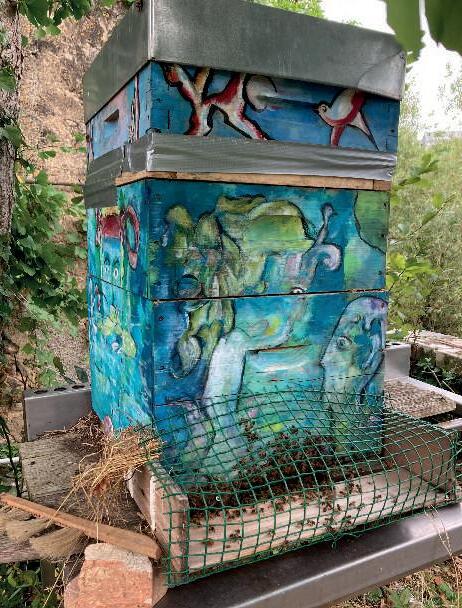
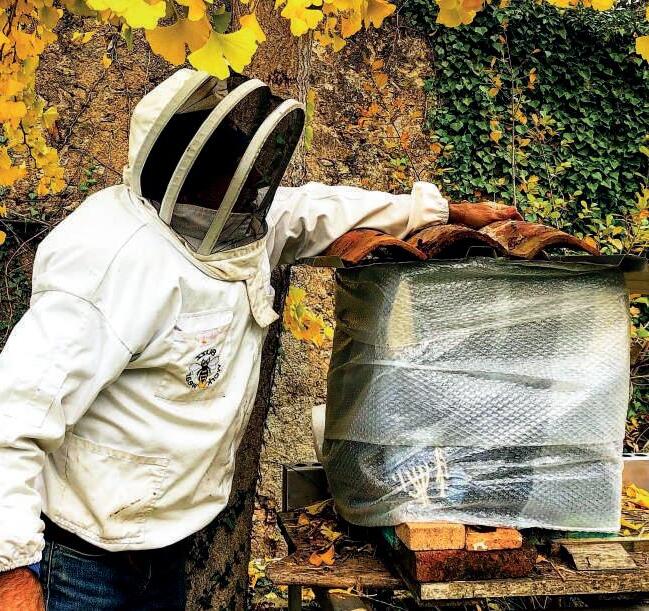
to the production of honey. They also suppress the swarming of the queen since this also affects honey production. The swarming process is the reproductive system for the bees. It is by swarming that the bees are able to juggle the genetic opportunities available to them which helps them adapt.
Let us not forget the changing climate, whether you think it is real or not. Last year we experienced one of the warmest years on record. Greece was particularly hard hit with heat waves, raging fires, and floods.
“What used to be normal years in the past, are now exceptionally good years, and what used to be exceptionally bad years, are now normal years.”
– Apiary product quality inspector, referring to the evolution of honey yields in Crete, Greece
1. “Climate change has/will have various, interlinked impacts on beekeeping;
2. these impacts are predominantly negative but not exclusively, hence some beekeepers may ‘win’, some may ‘lose’;
3. (honey)bees as a species are deemed to be resilient and therefore believed to be able to cope with the challenges imposed by climate change, at least if properly managed;
4. climate change is perceived as a main challenge for beekeepers who will need to demonstrate a certain degree of flexibility, adaptability and resilience alike”
- Science of the Environment
Honeybees connect us to the environment. Anyone engaged in beekeeping will notice nature a lot more, you begin to see that everything is connected. Nature and the natural processes must be respected or we could possibly lose a lot more than we have already.
If you are already a beekeeper and want to change to a more natural and regenerative management system or you are just starting out and want to follow a more holistic approach, please visit my website: www.regenerativebeekeeping.com
We can all make a difference.
There are several beekeepers here in France who use the principle of natural and regenerative methods to manage their bees. This involves many things but most of all it is about allowing the bees to develop on their own with as little interference as possible from the beekeeper.
Some of the beekeepers and organisations here using these methods are are:
. They have developed a more bee-friendly hive and keep bees successfully in trees.
www.custosapium.com
who has been a major contributor to wildlife. Chris has been
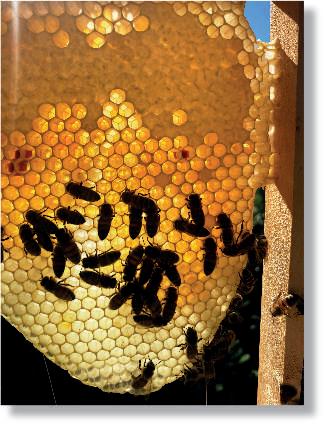
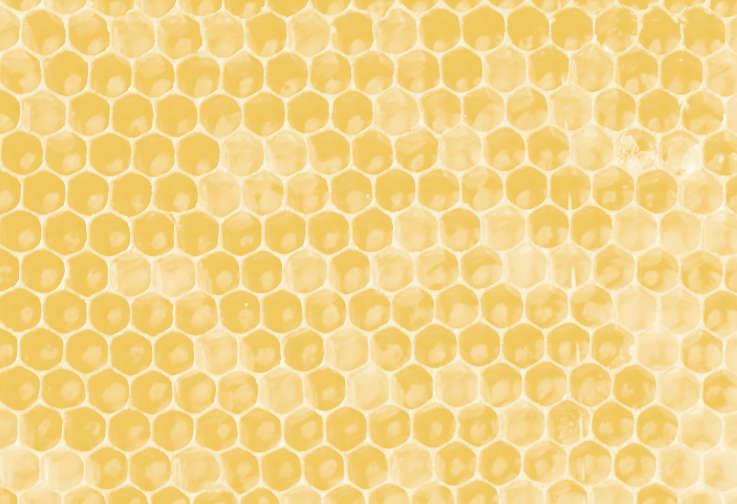
keeping bees without treatments and in as natural a way as possible for many years.
www.wildlifeinfrance.com
has been keeping honeybees for 15 years using natural methods and makes her own straw skeps.
Email: rident.jennifer@gmail.com
A magazine devoted to bees and pollinators, to change our attitude and behaviour with nature in general, bees in particular. To initiate and support new and alternative solutions, to bring together stakeholders in the field who consider the bee as a living, honest, and respectable being.
www.abeillesenliberte.fr





















 By Hazel Johnson Jack
By Hazel Johnson Jack
DO YOU FIND THAT YOUR DOG IS ALREADY OVER-EXCITED AS SOON AS YOU LEAVE THE HOUSE TO GO ON A WALK, OR AS SOON AS THEY THINK THEY’RE GOING FOR A CAR RIDE?
Does your dog seem to be frequently barking, pulling on its lead, or overreacting to things?
Many dog owners have a set routine. They get up with their dog at the same time every day, they feed them the same food, walk them, toilet them, and put them to bed at the same time and in the same way every day.
Routine allows your dog to make predictions about certain things. Predictions occur when things you do or say alert your dog that something exciting or worrying is going to happen, which may or may not involve them.
Here are some examples of things your dog can predict:
▪ When you’re about to leave them home alone
▪ When you’re going to get up from your chair and move out of the room
▪ When you’re going to take them for a walk
▪ When you’re going to go to bed
▪ When you’re going to go into the garden either with or without them
▪ When you’re going to turn left or right on your walks
▪ Going to the car
▪ Putting your shoes on
▪ Putting your slippers on
▪ Putting on and taking off your coat
▪ Talking to people
My dog Jack always used to know when I was about to leave him at home with my husband because I would kiss my husband goodbye! These kisses became predictors of me going out and leaving Jack behind which would trigger a great deal of barking and thrashing about. Jack would launch himself in front of the door and attack my feet in an attempt to prevent me from leaving! It wasn't pretty, I assure you. It took us a while to work out what the trigger was but we got there in the end. Those triggers are not always obvious… it can be things we do or even things we say, like “Okay” when we use a certain tone of voice.
A walk with a dog who’s pulling on its lead and lunging and barking at other dogs is never pleasant, neither for you nor your dog
▪ When you’re going to take a car ride either with or without them
Dogs are creatures of efficiency. They take notice of everything around them. They very quickly learn what your different behaviours mean for them, whether for good or for bad. This then affects how they behave accordingly. We’ll come back to that in a moment.
There are actually micro-triggers that help your dog predict your next move! Here are just some of the things that are real giveaways to your dog as to what is about to happen next…
▪ The time of day
▪ Greeting another family member
▪ Coming home
▪ Picking up their lead and/or harness
▪ Picking up your keys
The thing is, if your dog is excited by the very fact you’ve put on a certain pair of shoes because it indicates you’re taking them for a walk, your dog’s already highly aroused before they even get out of the house. This can cause your dog to pull like a train on its lead, or to be reactive towards other animals, people, vehicles, or other dogs. A walk with a dog who’s pulling on its lead and lunging and barking at other dogs is never pleasant, neither for you nor your dog, and reactive episodes can cause a great deal of stress. This behaviour can very quickly become ingrained and takes a while to change.
The solution
The solution is actually remarkably easy... simply decrease your dog’s arousal by removing the predictors by ditching your routine! The less routine you have:
1. Your dog is less likely to pull on its lead on walks
2. Your dog is less likely to react badly towards other dogs
3. Your dog is less likely to be distressed if you’re home late and miss their dinner or toilet time
Hazel is a dog behaviour consultant, supporting dog owners to transform their dog’s challenging behaviour, and to develop their dog’s ability to make good behaviour choices
www.caniamis.com
See advert on page 45
4. Your dog is less likely to be distressed if someone else has to take care of them. For instance, a dog-sitter, or if they have to go into kennels or stay at the vets’ overnight
So it’s doing is reducing your dog’s arousal levels and increasing their levels of calmness.
How to ditch the routine
Ditching the routine is easy, but you have to be committed to it! Here are some ideas for ditching the routine:
1. Pick up your dog’s lead, walk around the house, then replace it without taking them for a walk
2. Have them wear their harness throughout the day as if it were a collar, rather than putting it on just before a walk
3. Don't leave your house or car keys always in the same place - mix it up. Throughout the day, pick up your keys, walking about with them, pop them down in different places
4. Try not to always wear the same coat or shoes for walking your dog. If you absolutely must, store them close to the door where you leave with the dog and put them on just as you’re about to leave
5. In addition, pop your coat on for a while, take it off, pop it on, take it off - wear it at random times throughout the day without going anywhere. Repeat this with your shoes
6. Change the time of day and the way you feed them – you could try giving them some of their food in an egg carton to tear up, you could hide food around the house or garden, you could scatter it in long grass, or you could put it in a puzzle feeder
7. Mix up your walks – don’t always go at the same time of day out of the same door if you can help it. Change your routes frequently
These basic steps will help your dog, and in turn help you. For personalised support reach out to a nearby trainer.
spring night and

THE WINTER MONTHS SHOULD REALLY BE BEHIND US NOW AND HOPEFULLY WE WILL HAVE SOME BETTER CONDITIONS FOR OBSERVING DURING INCREASINGLY SHORTER NIGHTS
We can look forward to a few old friends brightening the April skies, however. We have the Milky Way reappearing on the horizon looking towards the north, where you should be able to spot a number of spring constellations. We have one of the annual meteor showers towards the middle of the month, and for those of us with a small telescope, we have the many galaxies within the constellation of Leo to search for. With a little perseverance we could manage to spot a couple of planetary conjunctions and with good binoculars or a small telescope we can, at a particular
time and date, search for the interesting 'Clair-obscur' effects on the Moon, known as the Lunar 'X' and Lunar 'V'.
The main constellations we can look for within the Milky Way this month are ; Cygnus, (The Swan), which is supposed to be flying south throughout the summer, will be seen rising gradually above the horizon with the very bright star of Denab marking the tail of The Swan.
Lyra, found just to the north east of the Swan, is marked by the bright star Vega. This constellation is home to the very
 By Claire Wardlaw
By Claire Wardlaw
Claire Wardlaw, originally from Edinburgh, lives in the Charente with her husband. Since their move to France, Claire has become passionate about astronomy
photogenic 'Ring Nebula' also known as M57.
Hercules, a little further north and to the east of Lyra, can be identified most easily by looking for the rhombus shape at its centre. This is also referred to as 'The Keystone' and is home to the beautiful bright globular cluster of M13. This will be visible to the naked eye in good observing conditions.
Leo, 'The Lion', is carrying on its ever westward march and is home to many galaxies . These could be visible with a small telescope but are also imaged

regularly by astrophotographers this season.
The Moon Phases and observing in April
Last Quarter Phase - 2nd at 04h15
New Moon Phase - 8th around 19h00
First Quarter Phase - 15th 20h20
Full Moon Phase - 23rd just before 01h00
If you have clear skies on the 16th of this month and enjoy observing in the wee small hours of the morning, you could look for a very pretty 'Clair-obscur' effect (meaning strong contrast between light and dark) on the surface of the Moon. We can search for the Lunar 'X' formed by light and dark areas on the craters Blanchanus, La Caille, and Purbach. The Lunar 'V' is formed by the ridges and elevations near the crater Ukert. We must be ready to observe this effect at 04h07 as the Sun's rays shine on the Moon's craters close to the 'Terminator'. This is the area which marks the transition between the lit and the shaded part of the Moon's surface as it rotates during its orbit.
Planets this month
also be close together in the evening twilight of the 20th. A much easier meeting to observe will be on the 10th, when Jupiter will be found very close to a pretty narrow crescent Moon. At around 22h00, look towards the west to see this pair with The Pleiades just above.

The biggest new space mission of the year will be the Europa Clipper Orbiter, which is scheduled to launch in October 2024. The mission will assess whether Jupiter's moon Europa could support life in the ocean that lies beneath its icy surface.The mission will place a spacecraft in orbit around Jupiter in order to perform a detailed investigation of Europa, a world that shows strong evidence for an ocean of liquid water beneath its icy crust and which could host conditions favourable for life. The mission will send a highly capable, radiation-tolerant spacecraft into a long, looping orbit around Jupiter to perform repeated close flybys of the icy Moon.


Jupiter will be found very close to a pretty narrow crescent Moon
This month's meteor activity will centre around the annual, moderate shower of 'The Lyrids'. This shower is also referred to as the April Lyrids. The activity will last from around the 14th and will peak on the 22nd to 23rd, which is when the Moon will be full. Observing will be a little tricky with all of this light around. These meteors are fairly fast and are known to be associated with Comet Thatcher. While conditions are not the best for recording meteors, you may still be able to spot the brightest as they seem to emanate from around the constellation of Lyra.
This is not the best month for planetary observing as the Sun is blocking our views. With a little patience, however, you may be able to spot a close conjunction of Mars and Saturn in the morning twilight of the 11th. They will be very close to the horizon as the Sun begins to rise, so viewing is particularly difficult. The planets of Jupiter and Uranus (visible with a telescope) will
Have you ever wondered why we use this expression? 'The Milky Way' may be a phrase we take for granted! This name is given to the barred spiral Galaxy which includes our Solar System. Every star we can see in the night sky sits within our Galaxy. The name Milky Way describes our view from Earth of the milky band of light which spreads out above us and is visible in good clear dark skies. It is made up, we estimate, of 100 billion stars.
Clear Skies and Happy Stargazing!

1629: On 14th April 1629, Christiaan Huygens was born. Shortly after Galileo had first used a telescope for astronomical purposes, many other scientists decided to use this new instrument to perform their own studies. Many realised that the improvement of the quality of the telescope could mean the chance to make history in astronomy. Huygens applied himself to the manufacture of telescopes, together with his brother Constantijn, and soon after developed a theory of the telescope. He discovered a law of refraction to derive the focal distances of lenses. He also realised how to optimise his telescopes by using a new way of grinding and polishing the lenses. In 1655, he pointed one of his new telescopes towards Saturn with the intention of studying its rings. He was very surprised to see that, besides the rings, the planet also had a large moon. This is now known as Titan. In 1659 he discovered the true shape of the rings of Saturn.


Annual Subscription FR/EU only 55€
www.etceteraonline.org






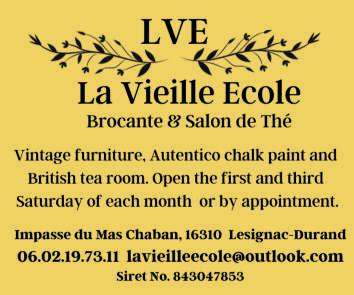











Free
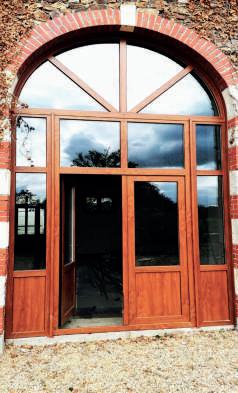
UPVC

Other areas by arrangement
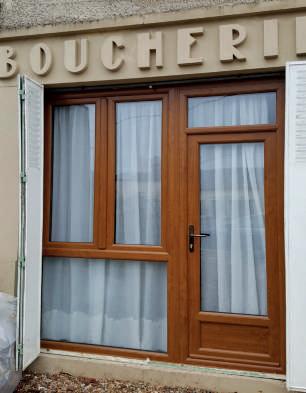
Doors & Conservatories
all colours and styles

Aluminium and UPVC Bifold Doors
Made to “A” Grade spec in French styles
www.affordableukdesigns.com
Phone: 05 49 42 99 41 ~ Mobile: 06 63 71 09 81 ~ Email: scott.braddock1@yahoo.com
Siret: 513 577 809 00017
 SATELLITE TV
SATELLITE TV
If it’s April, does that mean it’s stopped flippin’ raining? I’m fed up of getting soaked and even more fed up of having to wipe the dog’s feet when he comes in from the garden. We couldn’t try wellies as there were none in his size and whilst he could probably learn to pee in the toilet, I’m a little concerned he’d lose his balance when doing the other possibility! That would make his muddy feet seem like a blessing. Mrs W is very similar.
You might find that you lose your satellite TV reception more easily when it rains
A question I am often asked, other than ‘are you single?’, is how to get Netflix onto your TV. The simplest method is to have a smart TV. These days, nearly all have a dedicated Netflix button on the remote
control that will take you directly to it. Other ways include using something like an Amazon Firestick to effectively turn your TV into a smart one by connecting it to an HDMI socket. Or maybe a Google Chromecast type device? This connects to your TV (again, via HDMI) and allows you to ‘cast’ the content from your phone to the TV screen. Bear in mind though that Netflix is not free. You need to pay a monthly subscription. It’s the same with Amazon Prime Video - it’s not free. But unlike Netflix, it is a bit rubbish these days, with much content requiring further payment. After all the terrible weather we’ve had, you might find that you lose your satellite TV reception more easily when it rains. This is probably due to the dish being slightly out of alignment. If you don’t fancy trying to sort it yourself, one of the professionals in this publication will be able to assist you.
It’s not happened yet, but for anyone considering Starlink for their internet, you need to be aware that the very latest

residential kit comes only with a sort of kick-stand already attached to the dish. This means it can only really stand on the ground. This is not ideal. You can purchase other mounting options but you need to do this when ordering the kit. At present these kits are only available in North America, but it’ll only be a matter of time before they hit Europe.









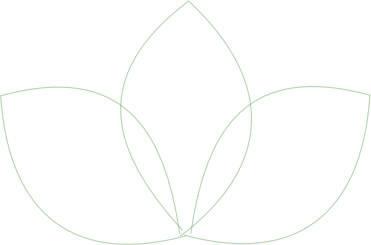












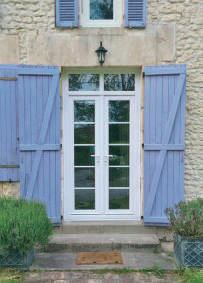





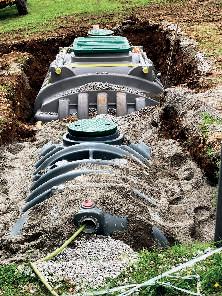

































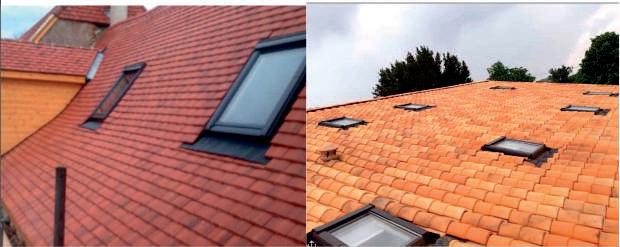














T:
Based




























27 av Henri Barbusse, 87200 Saint Junien Service
05 55 02 11 11
email: immo@courivaud.com site: www.cmvnotaires.com


